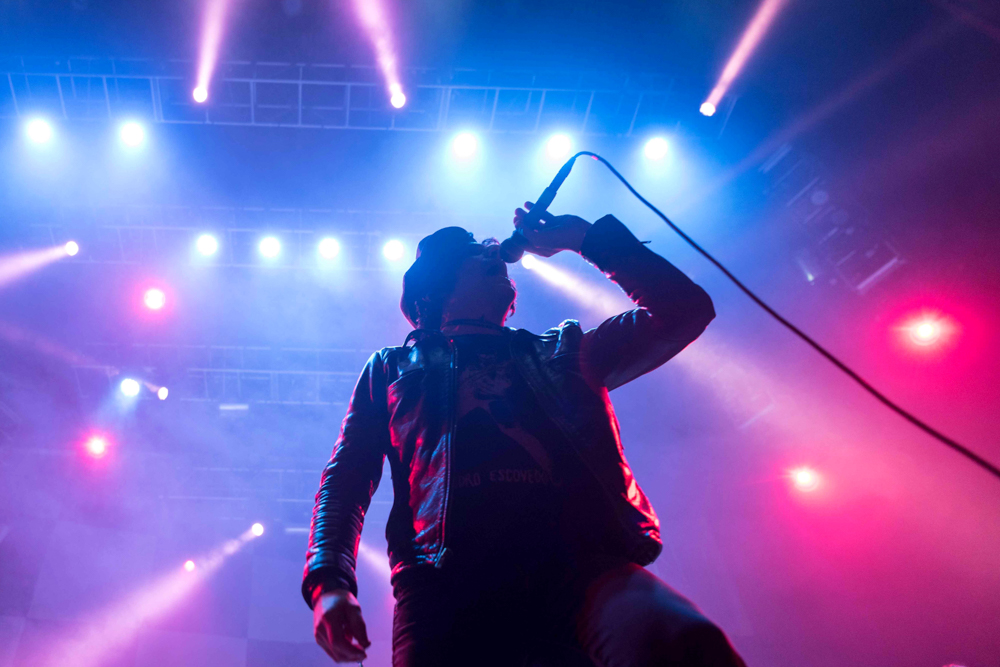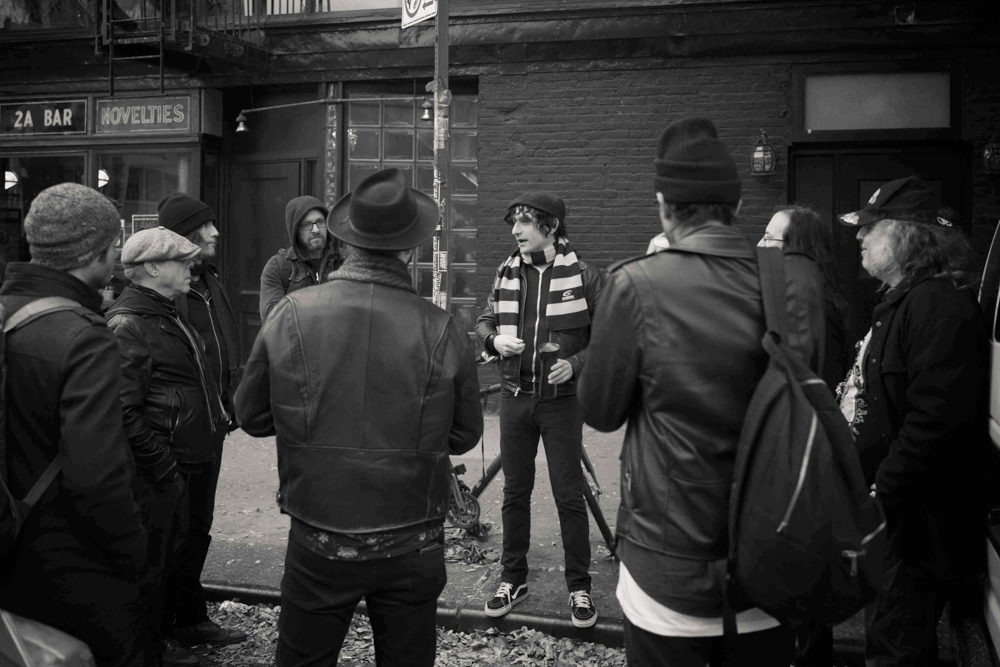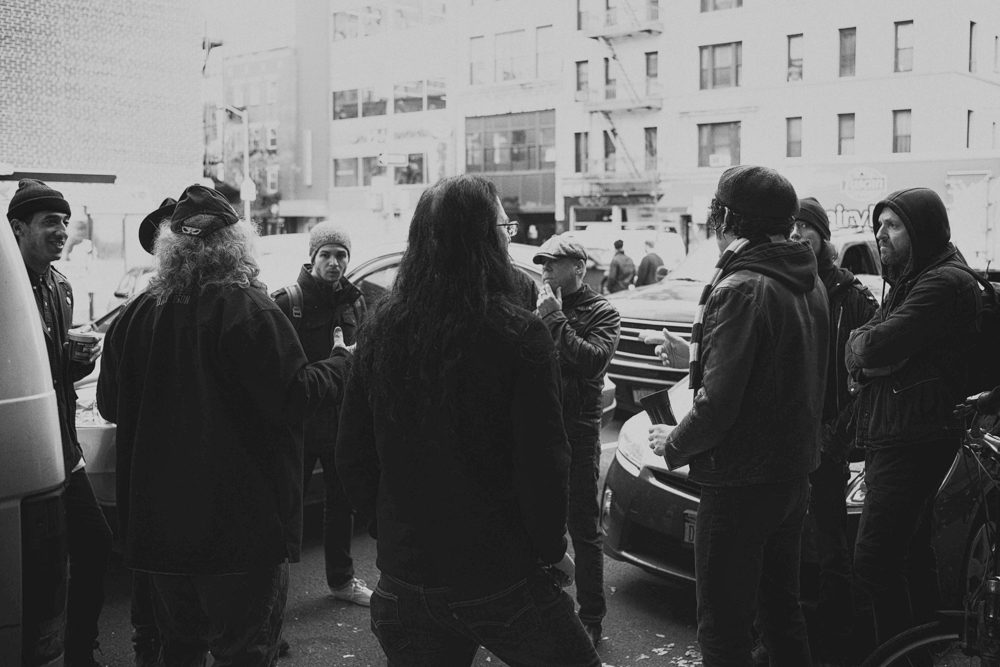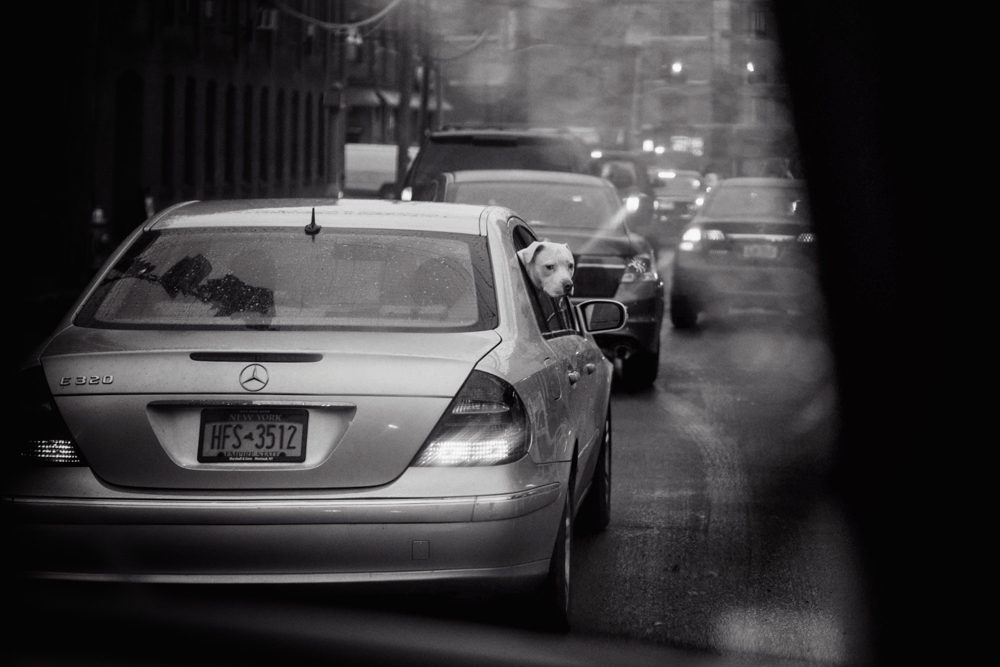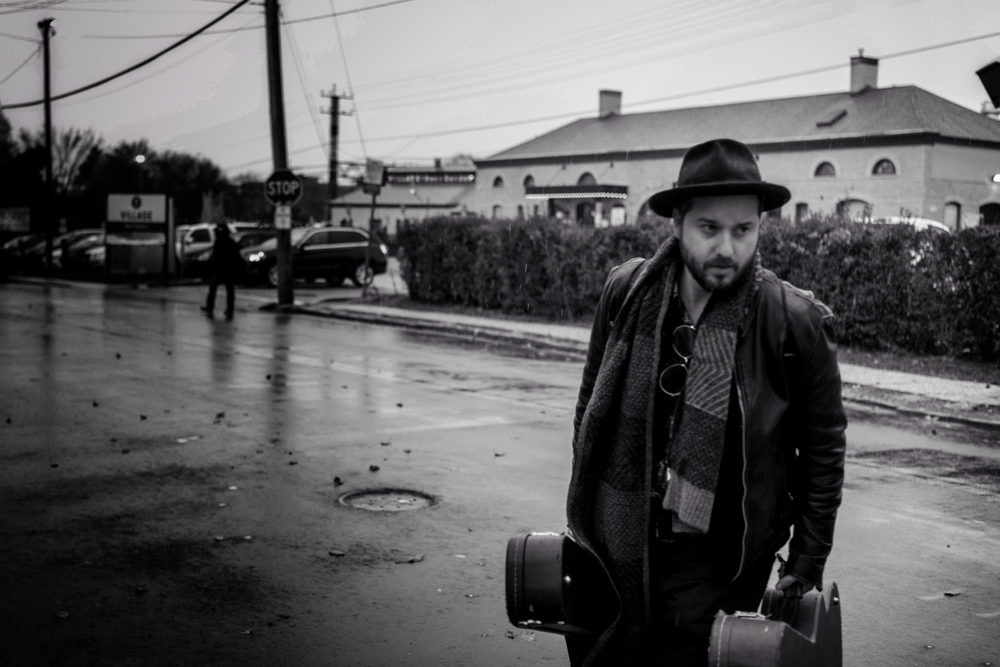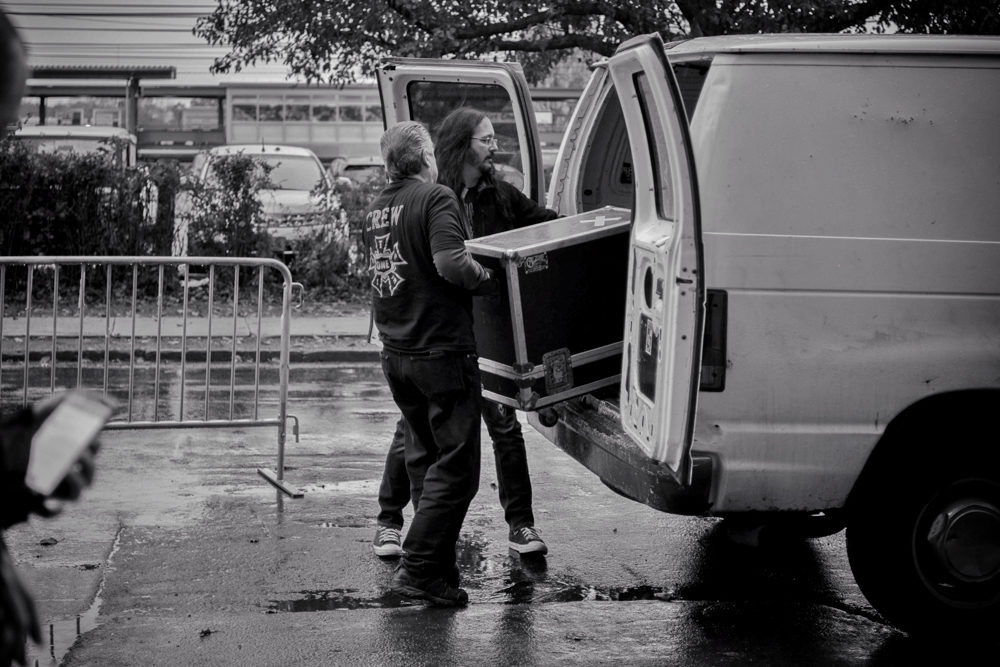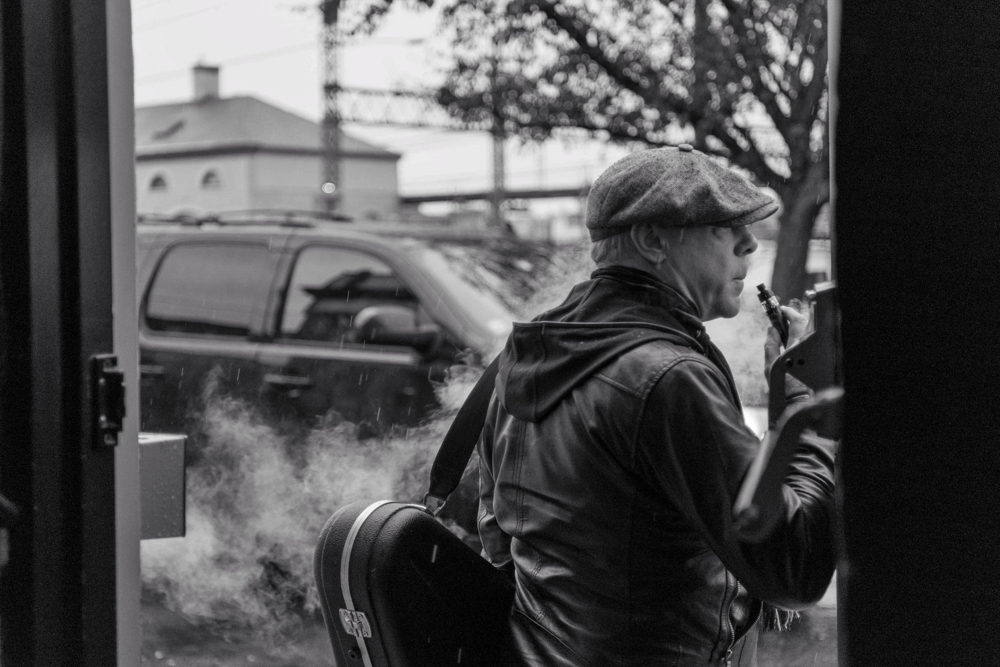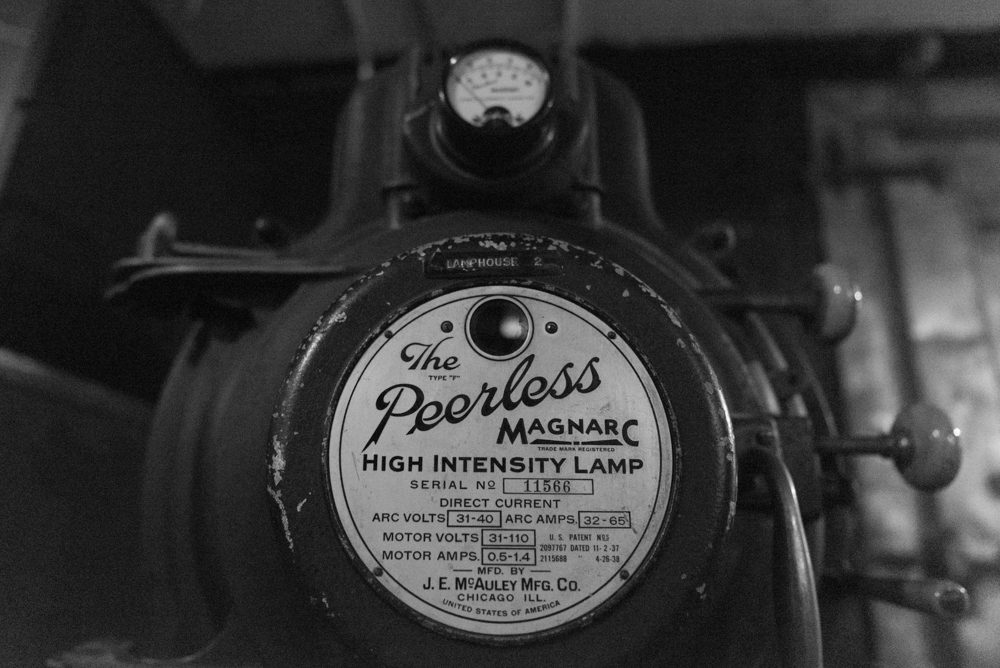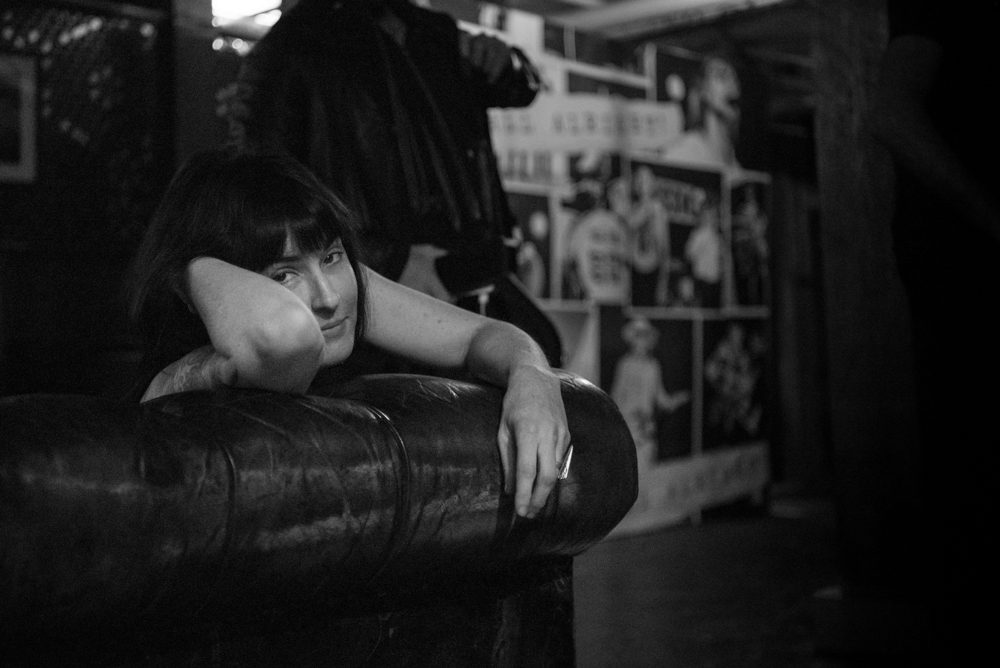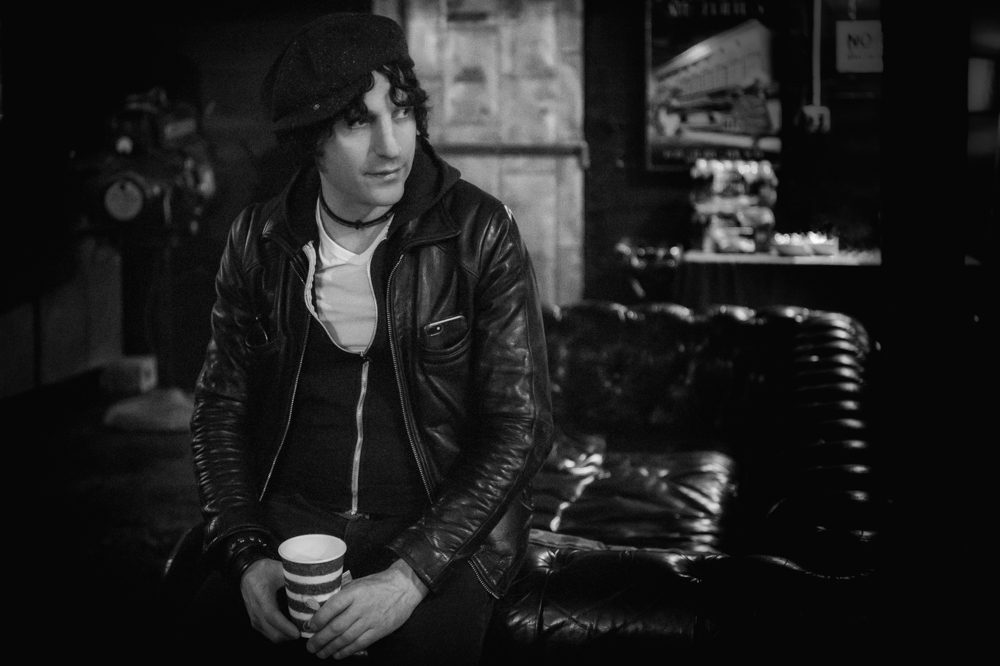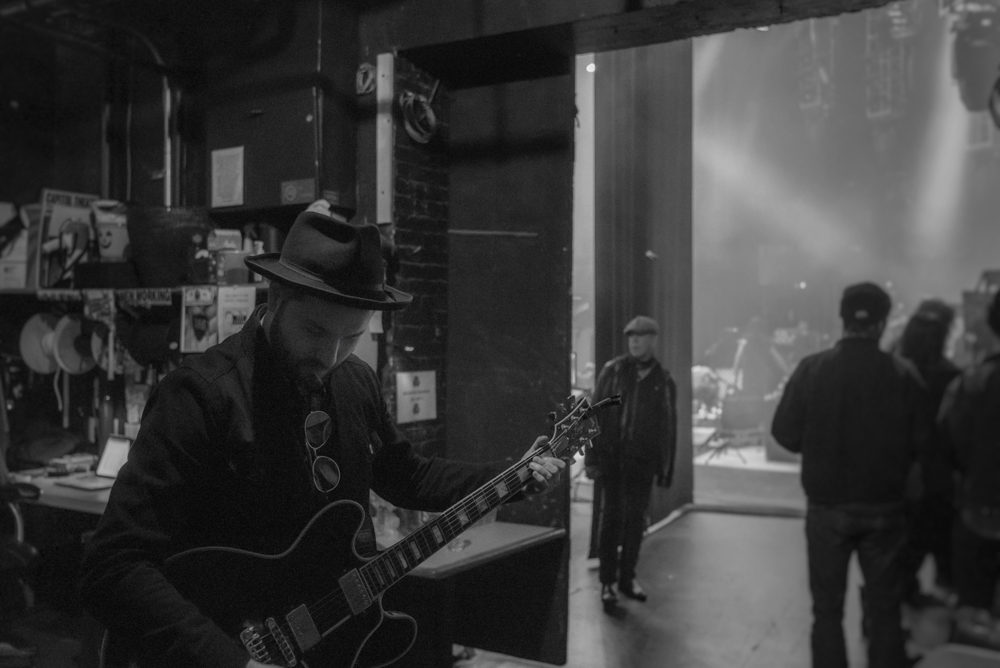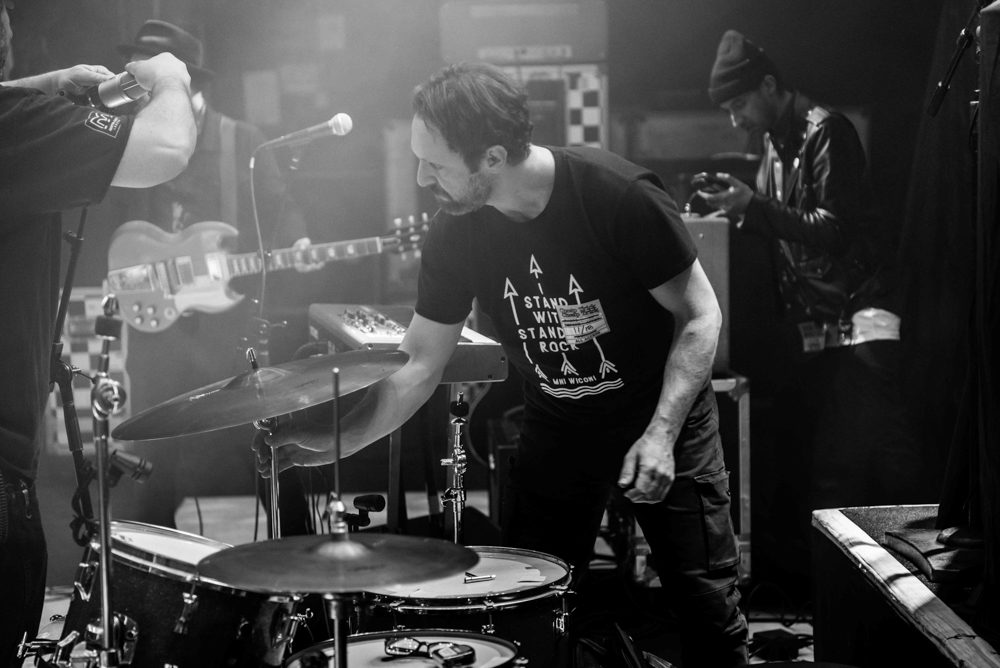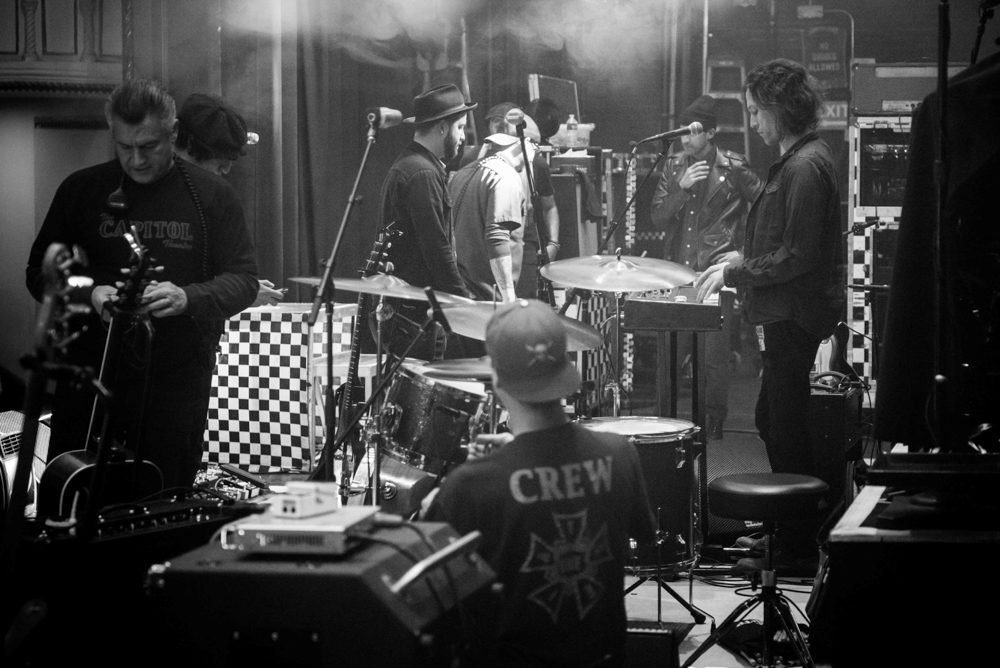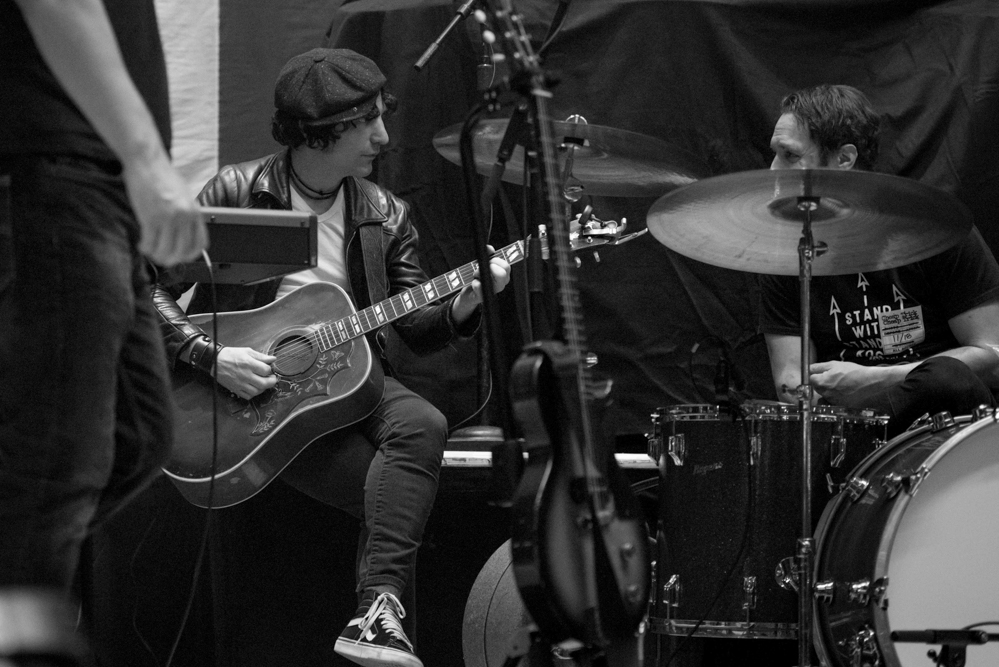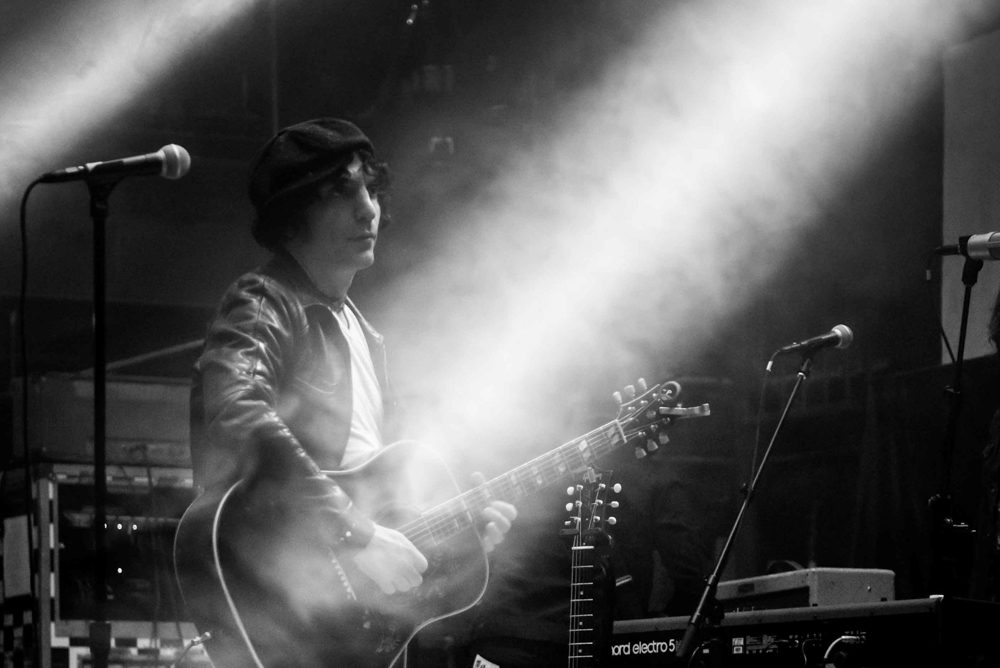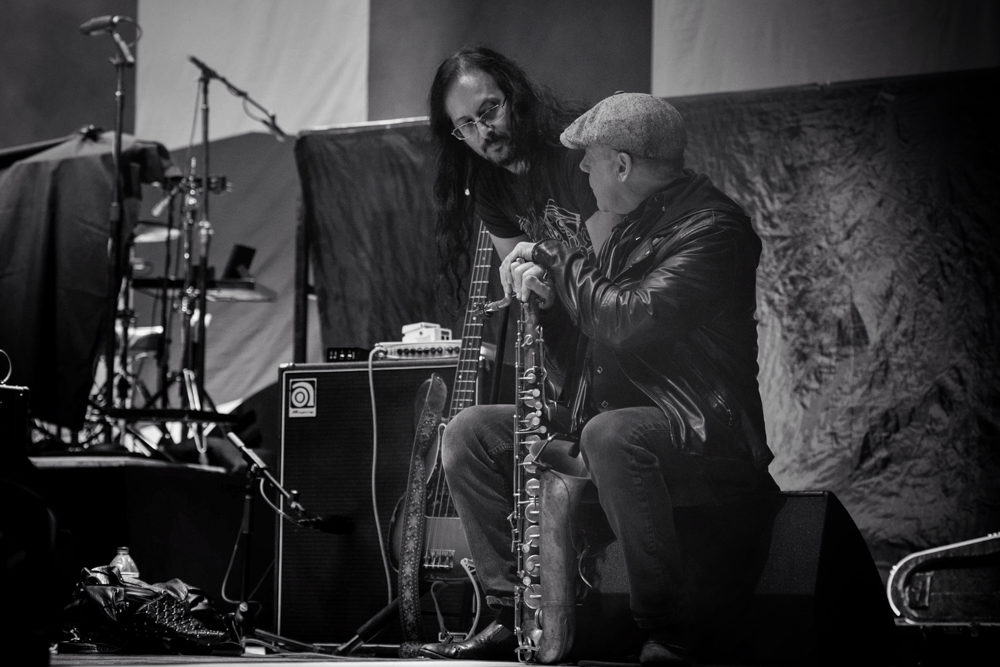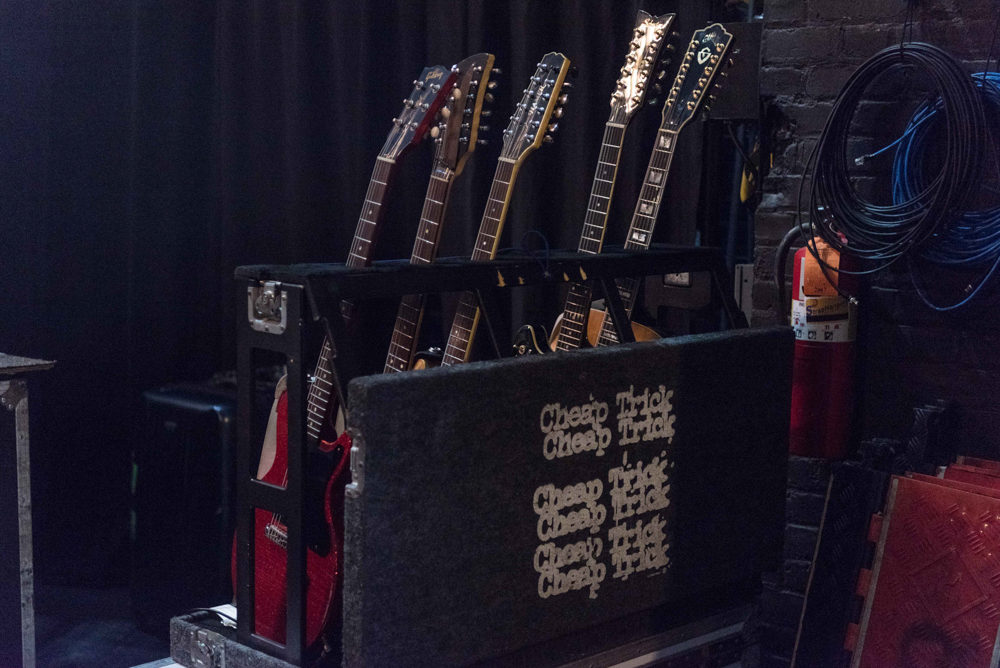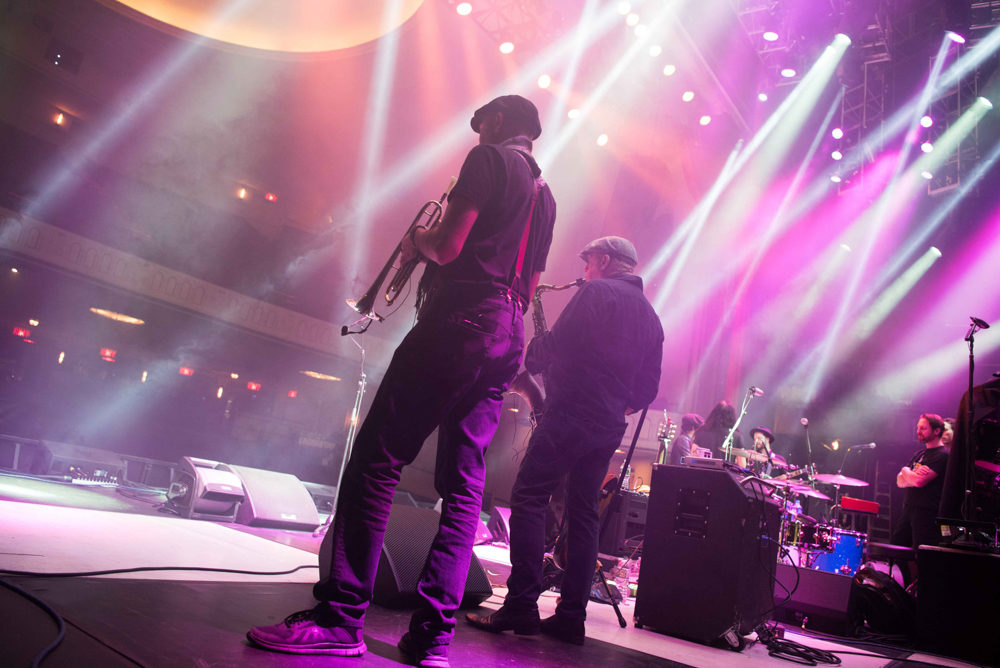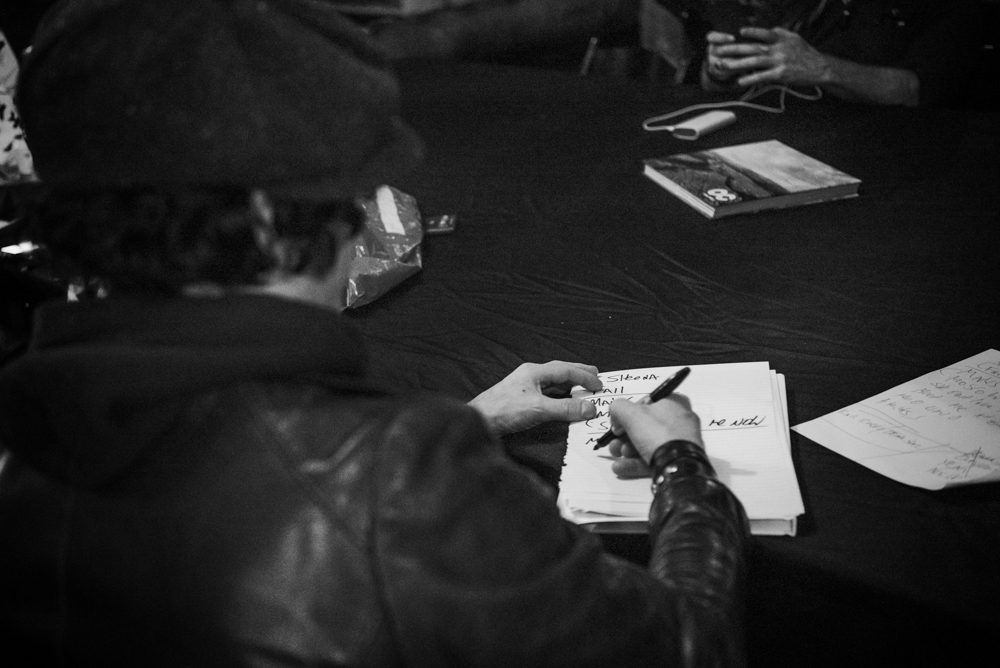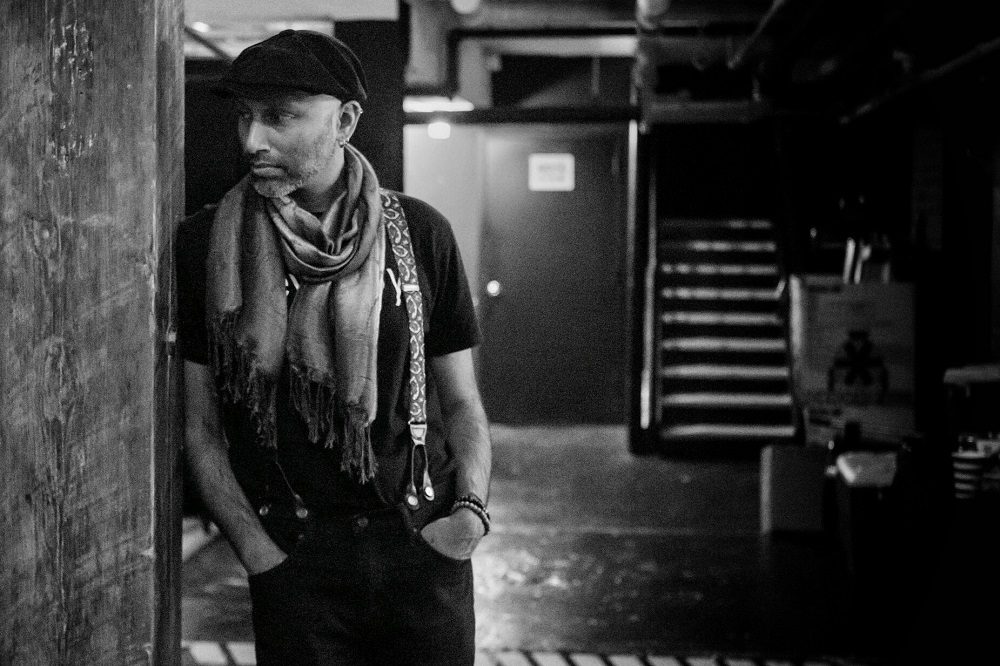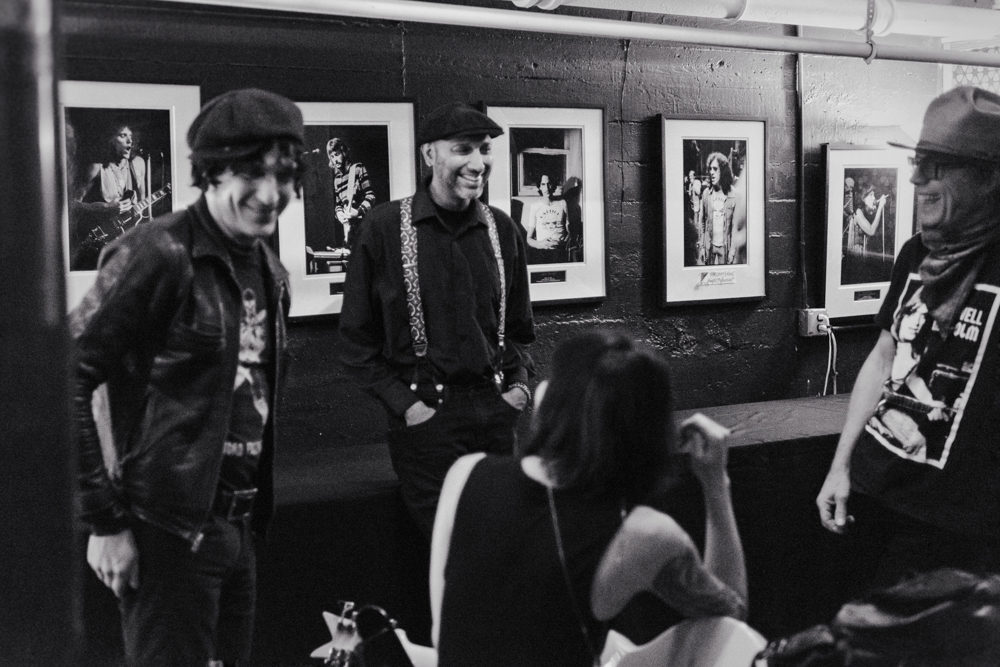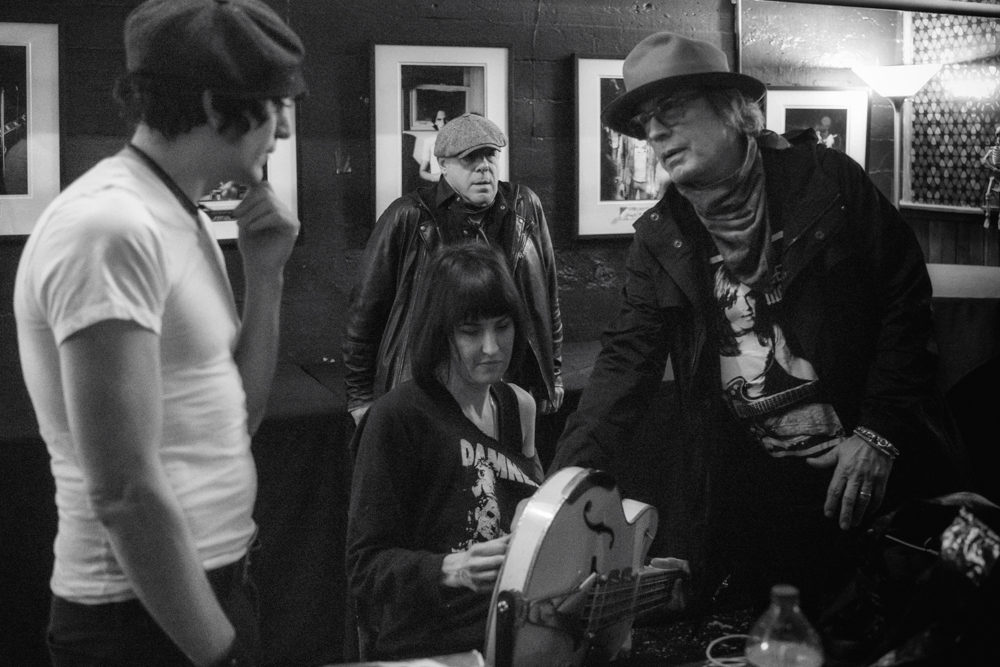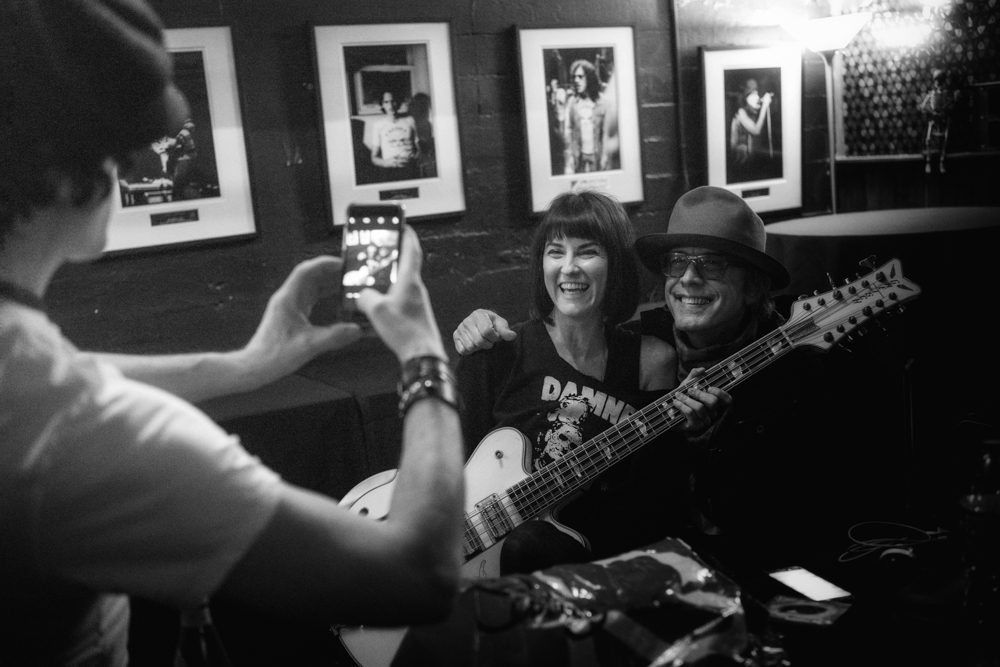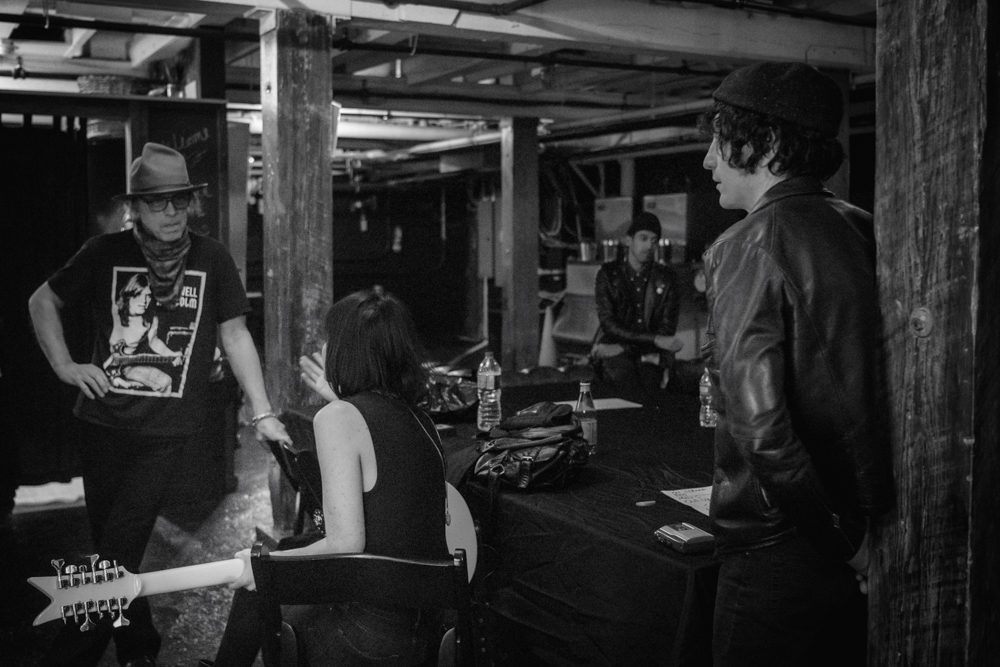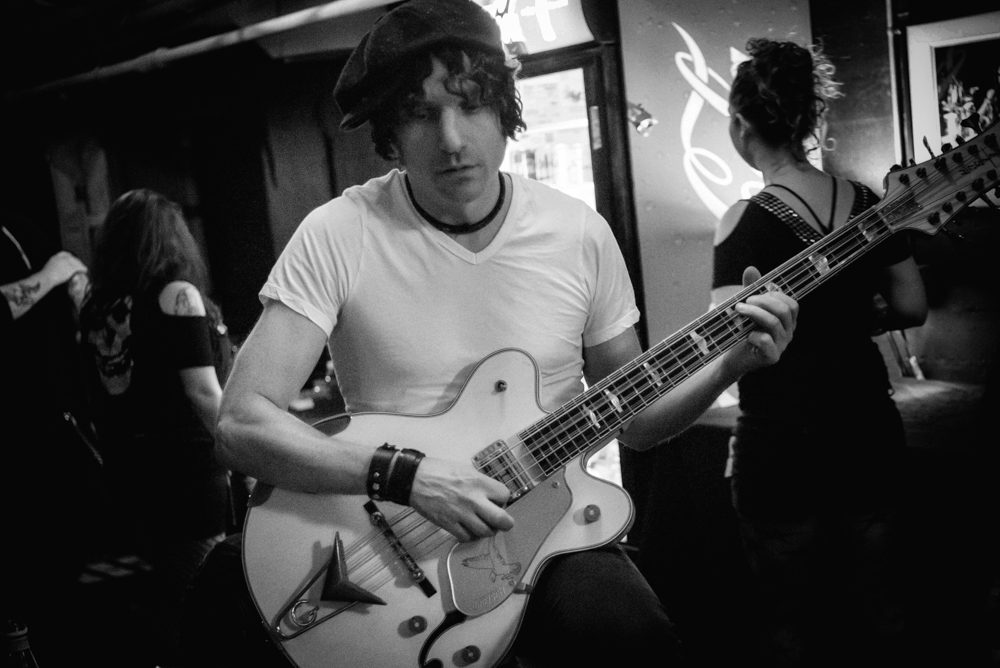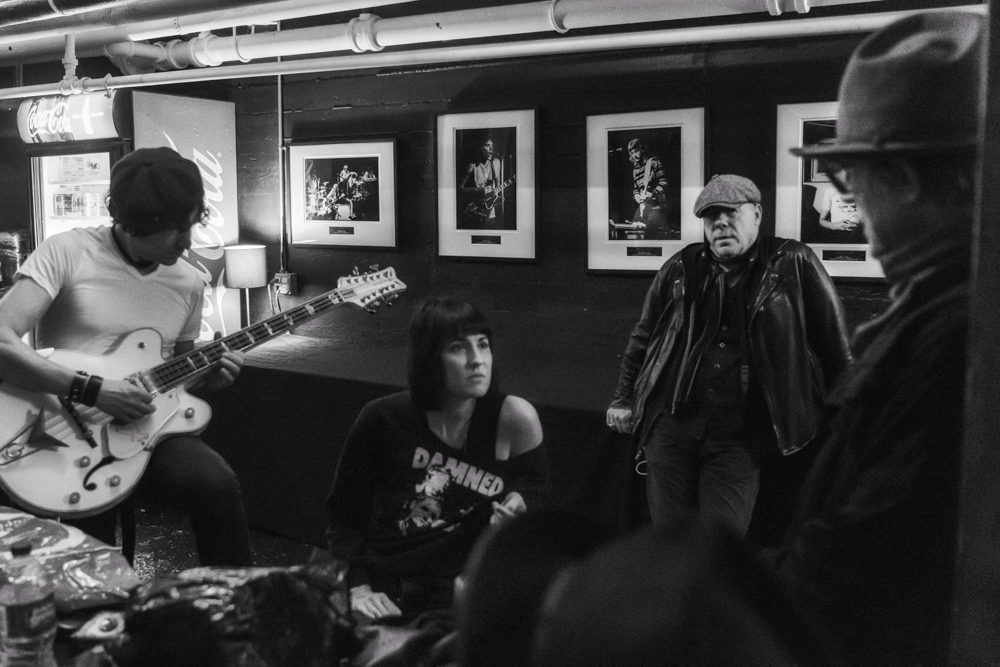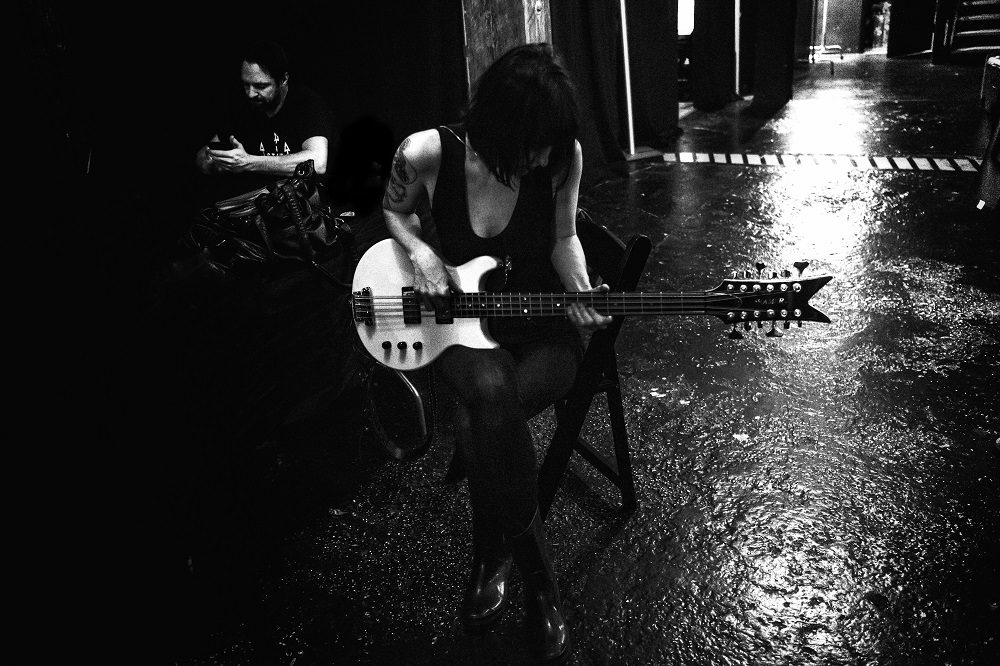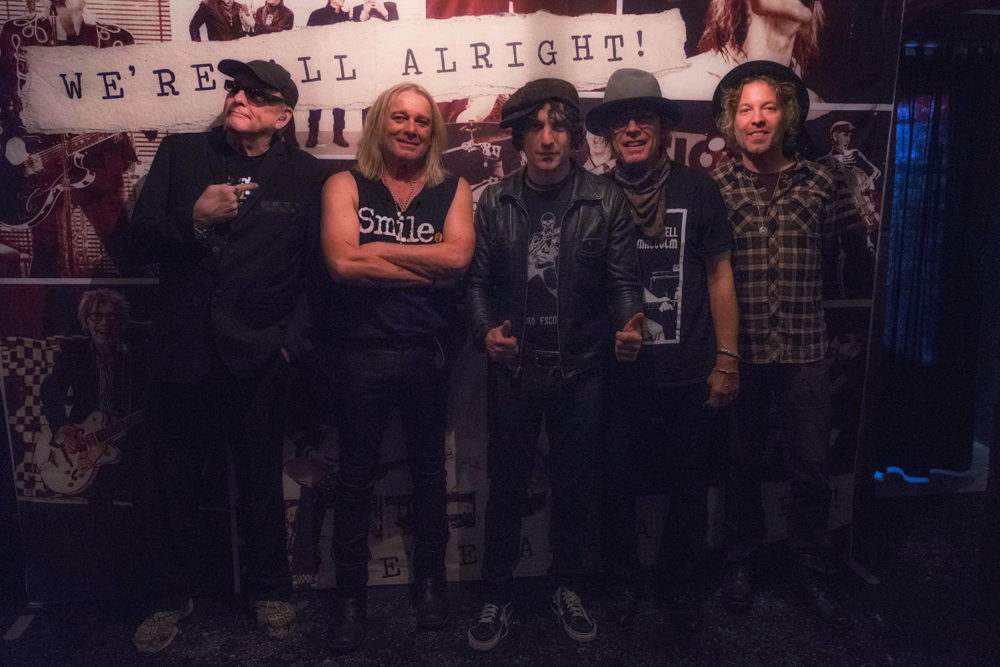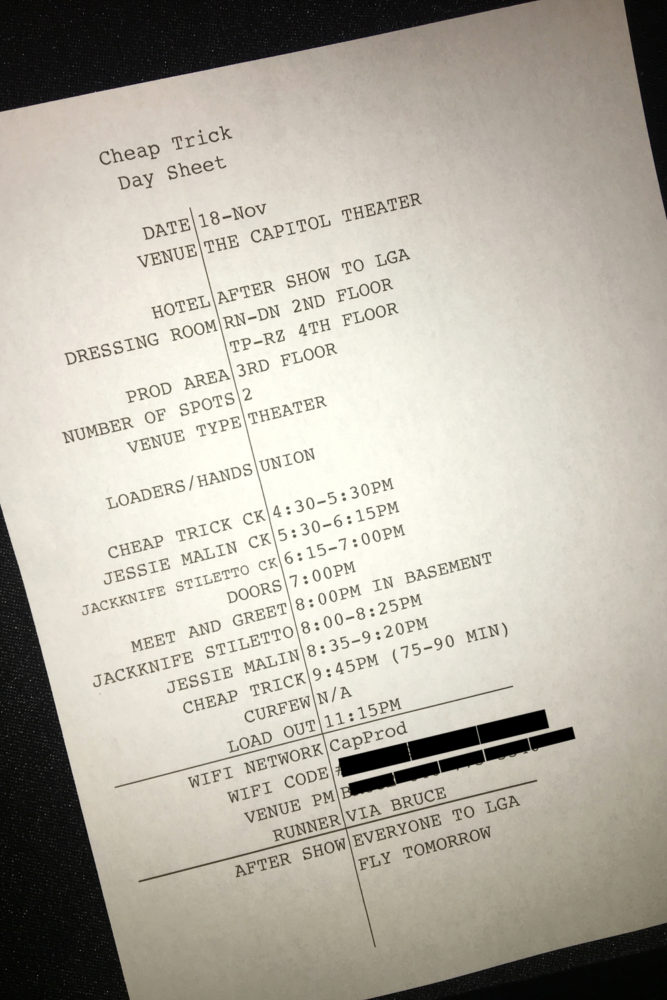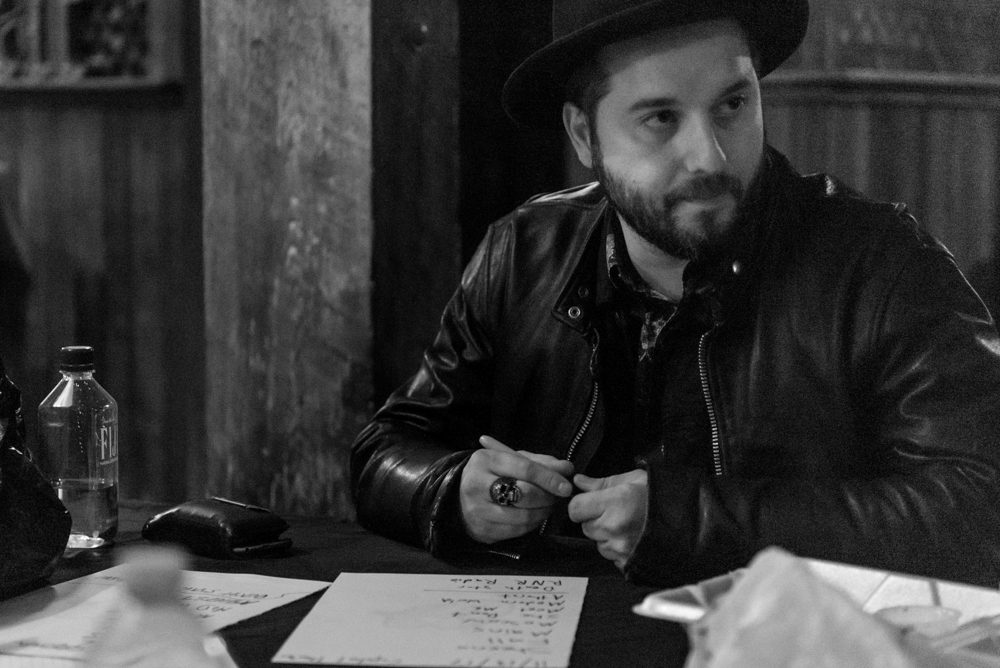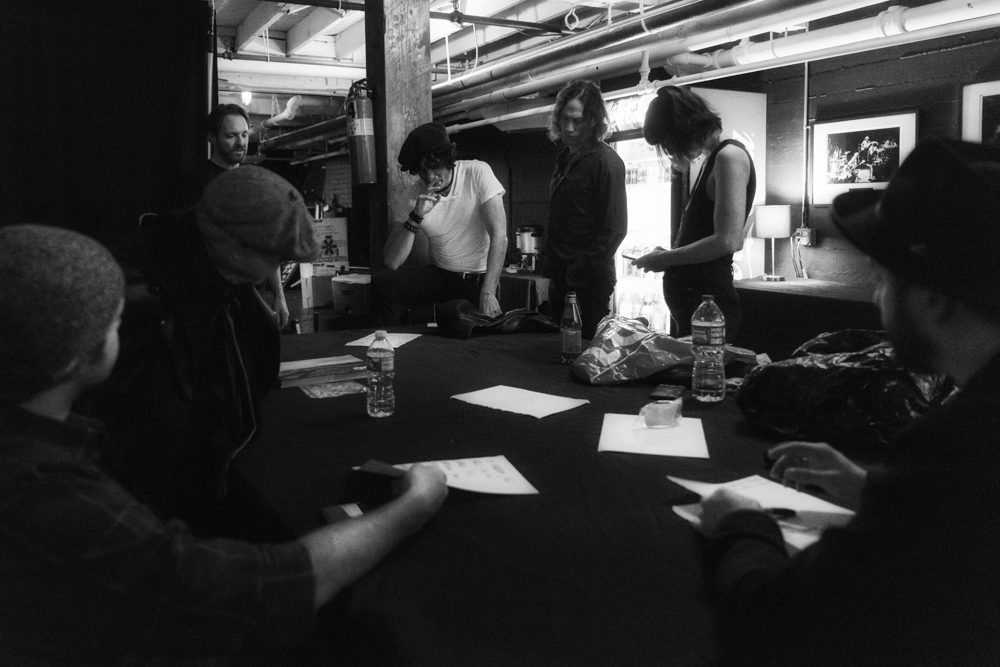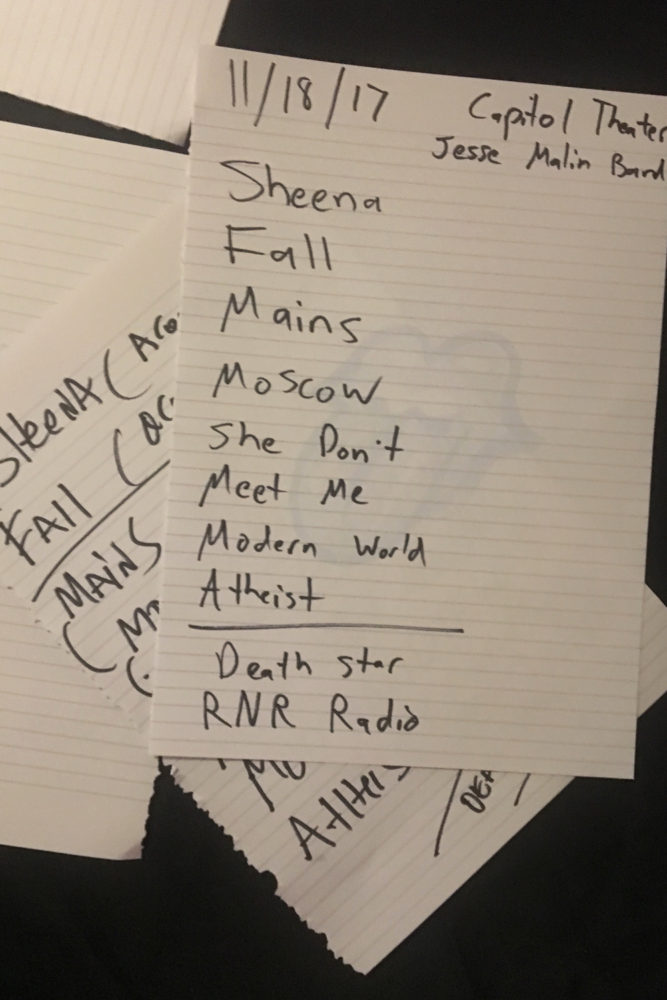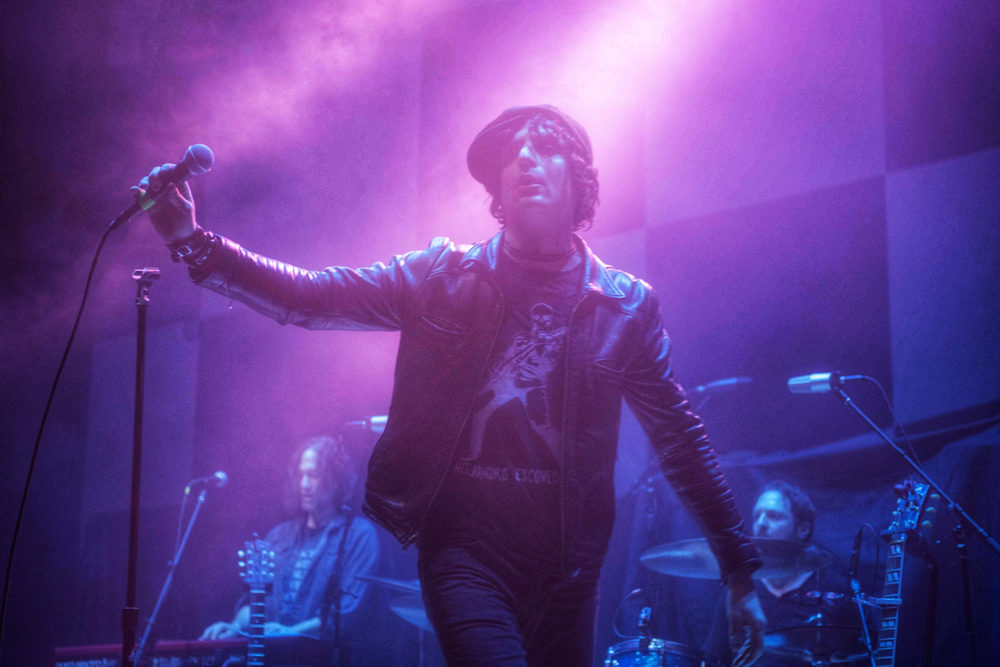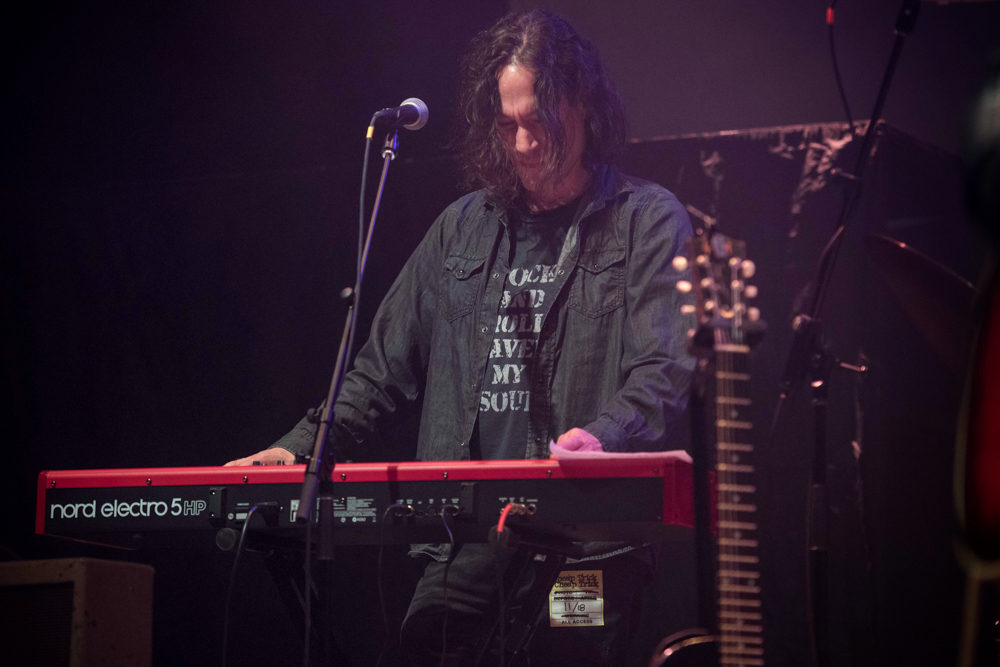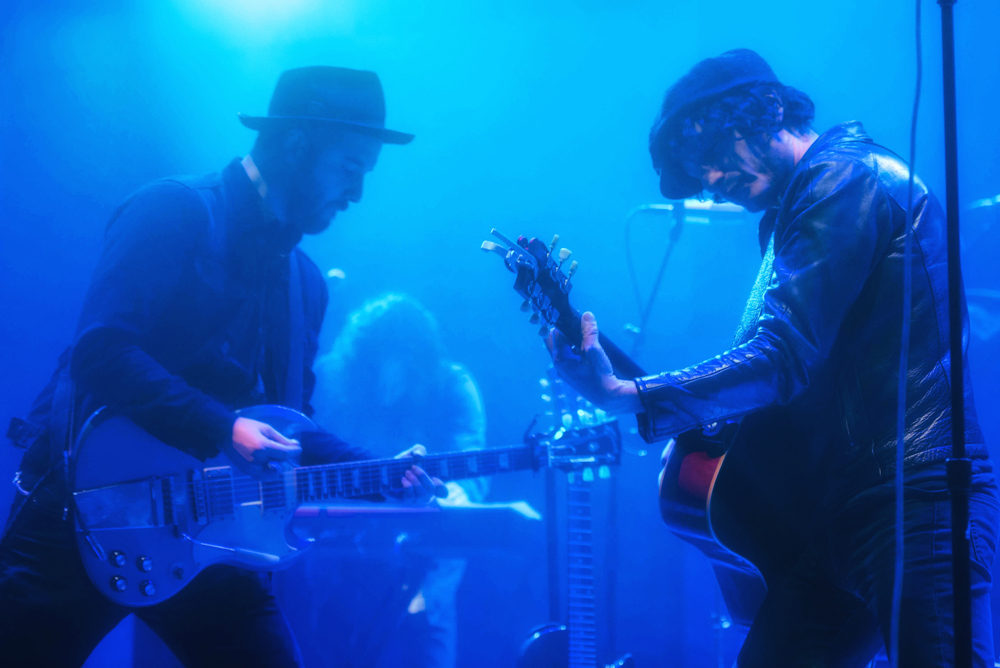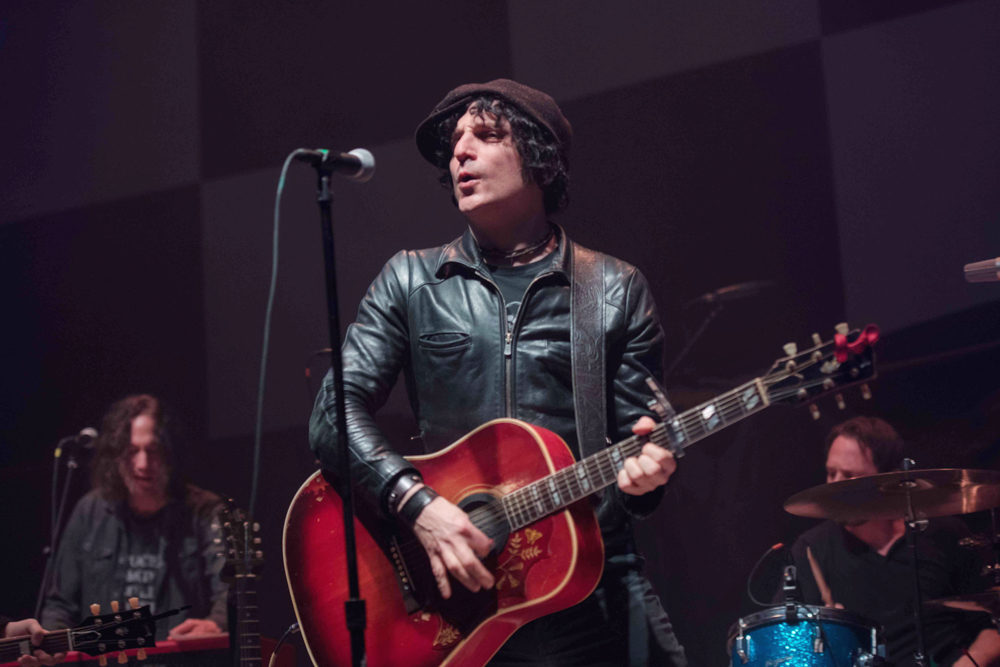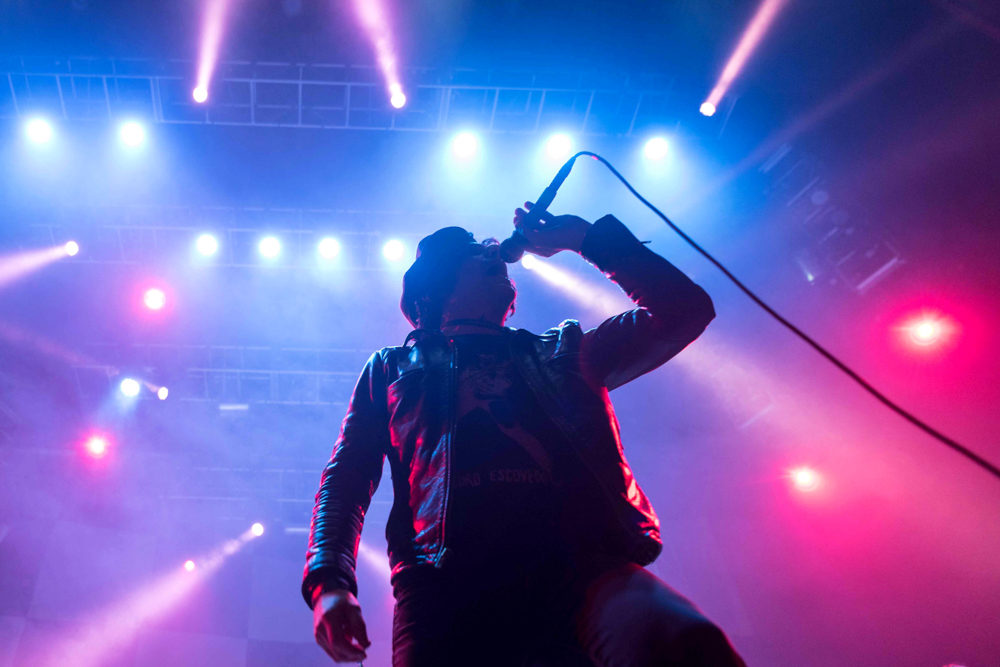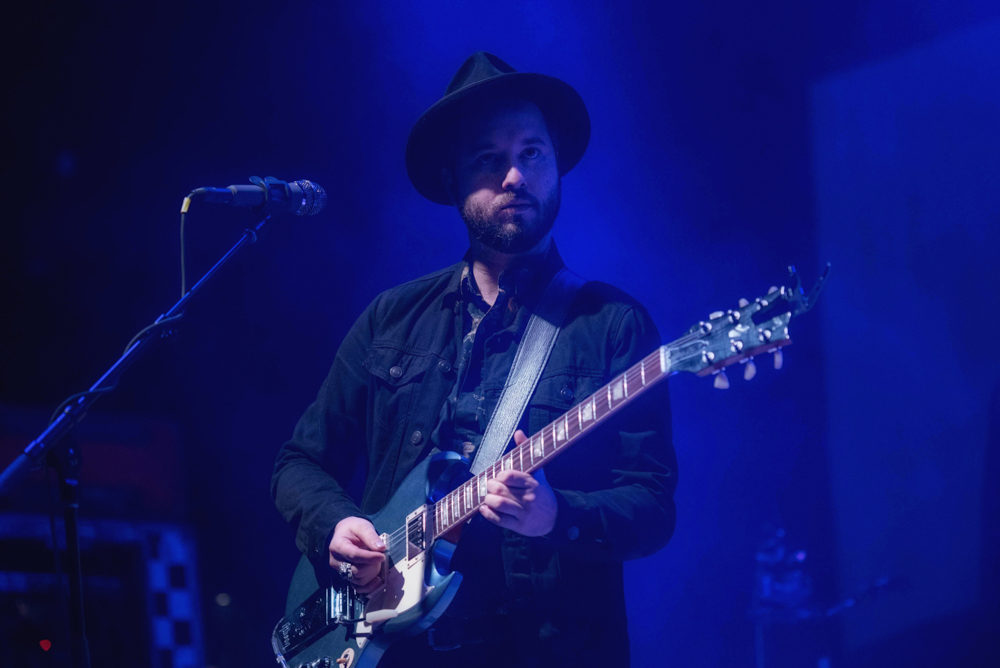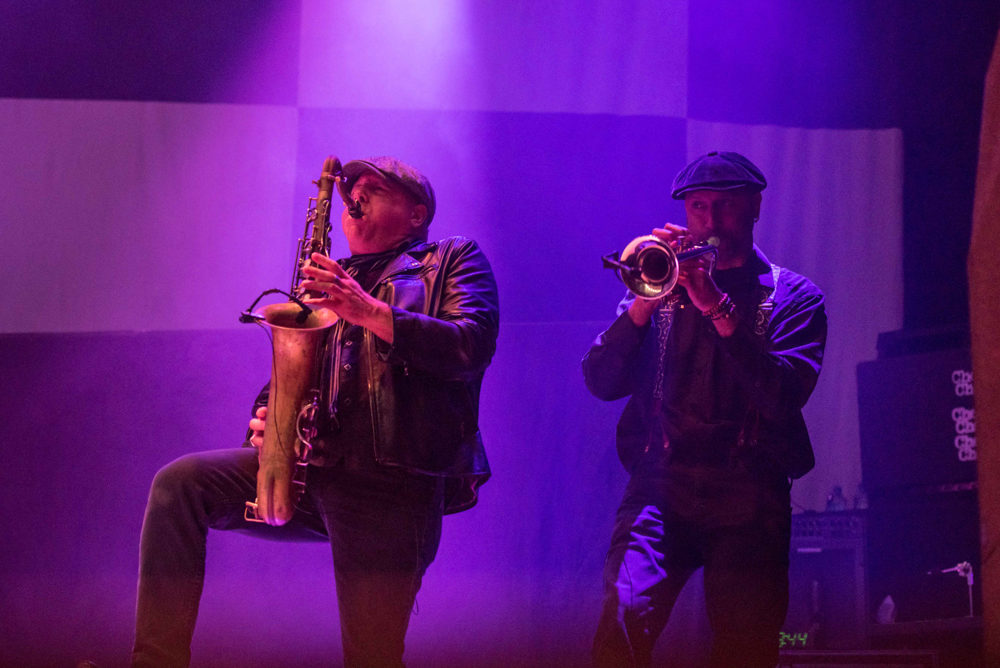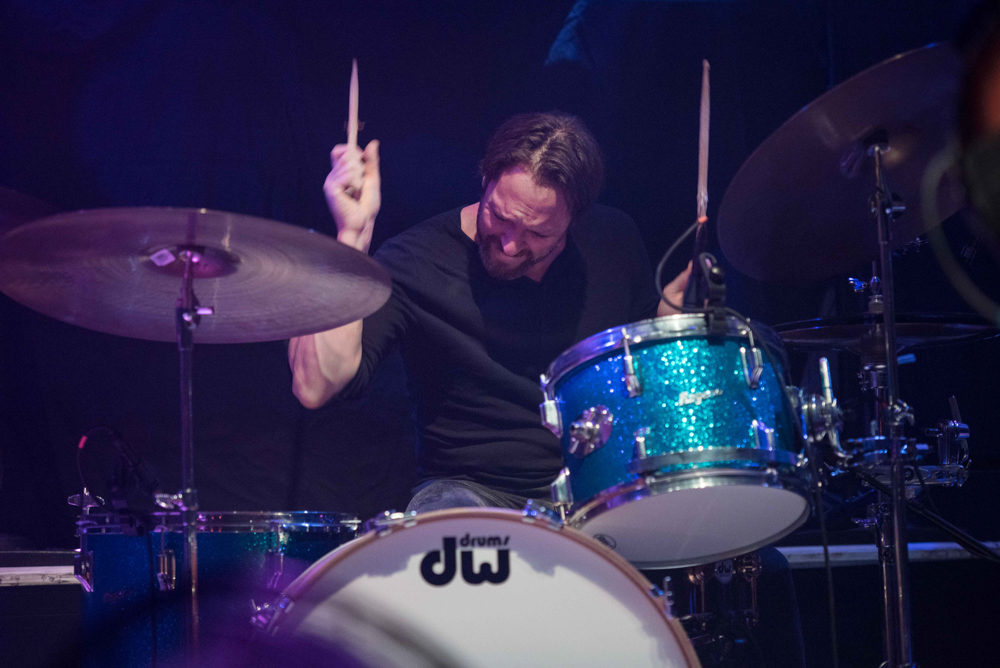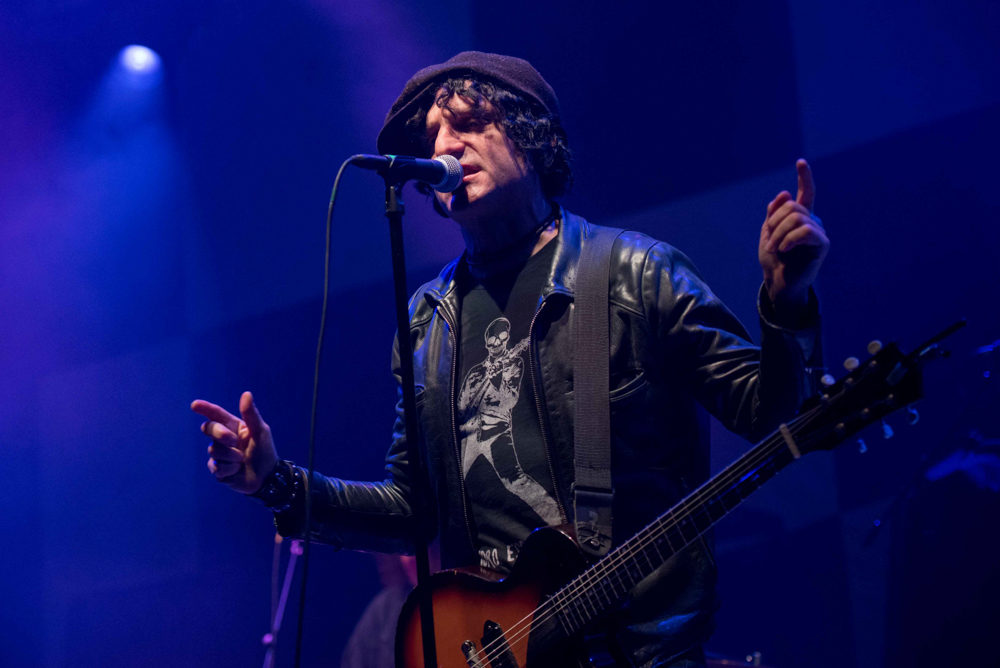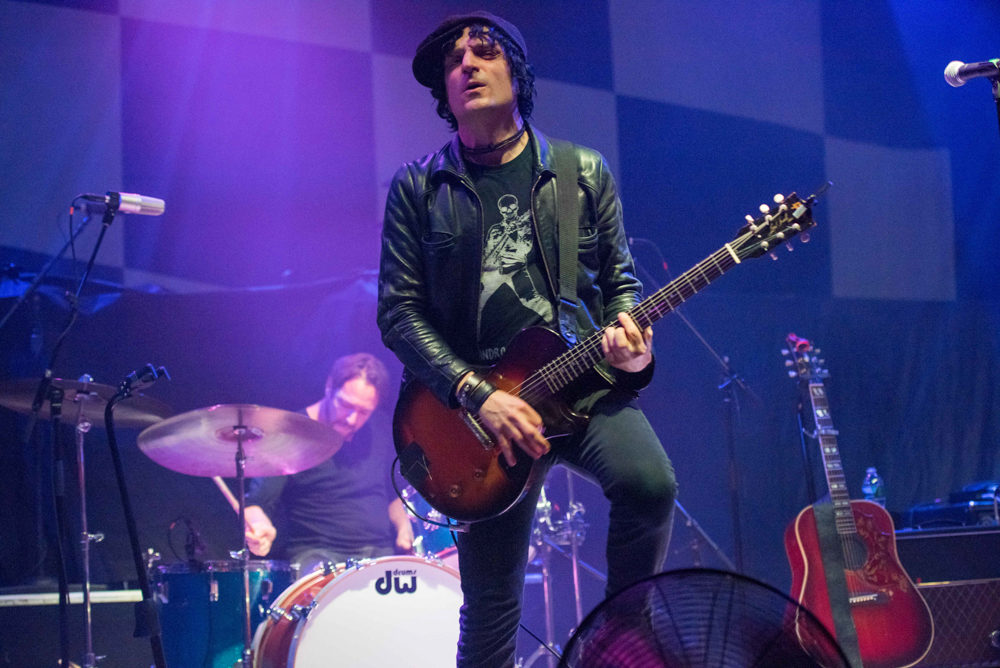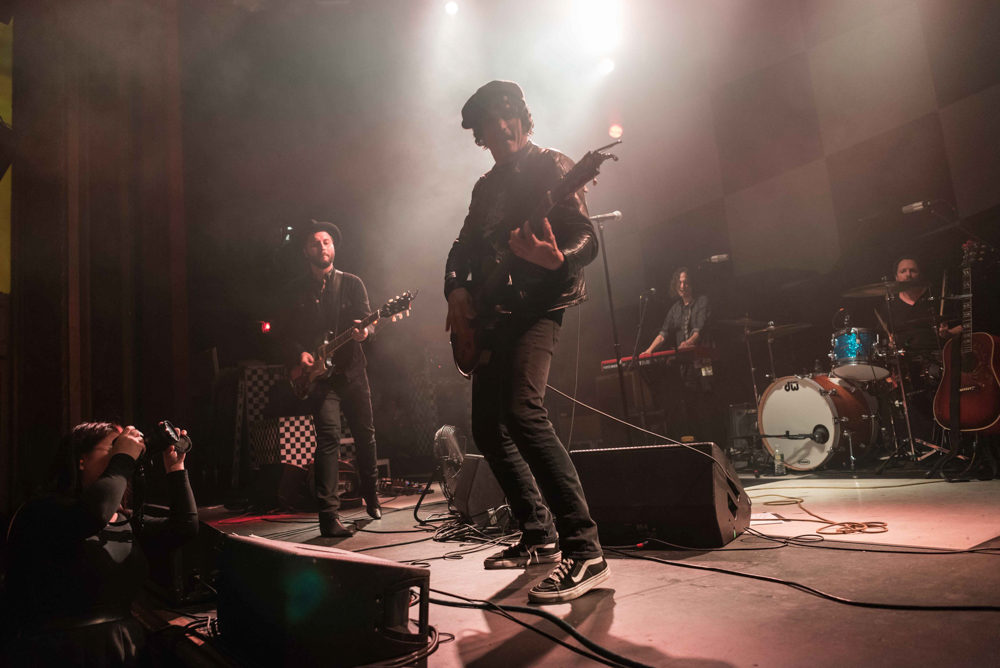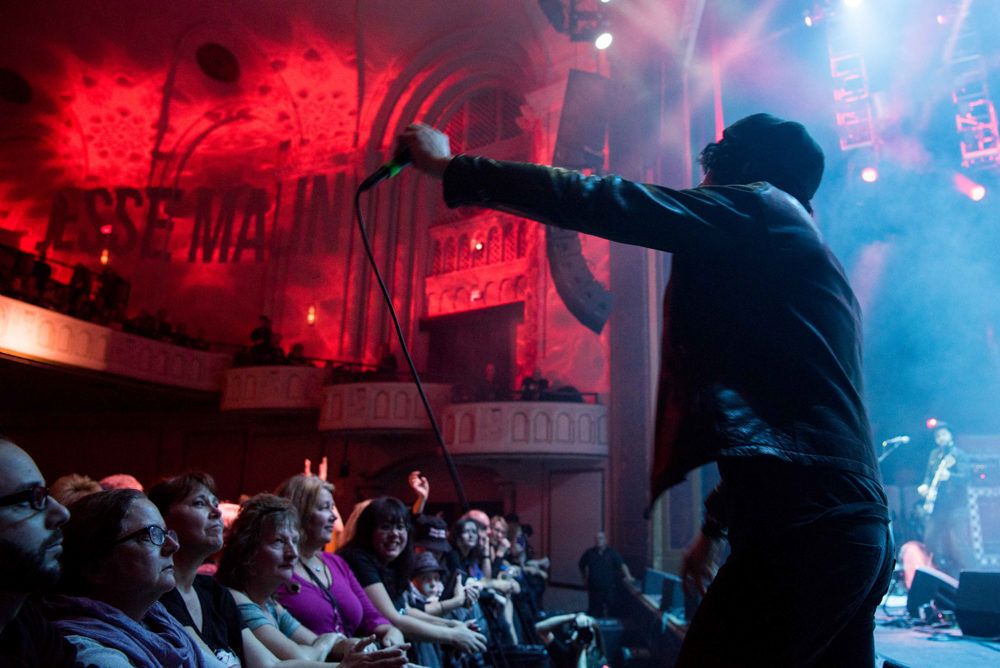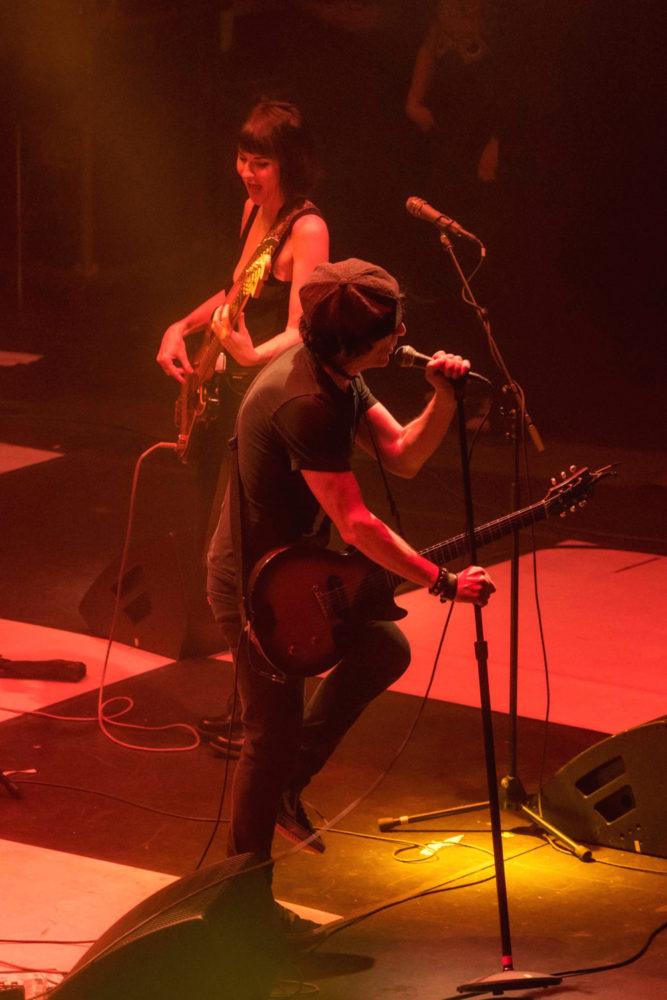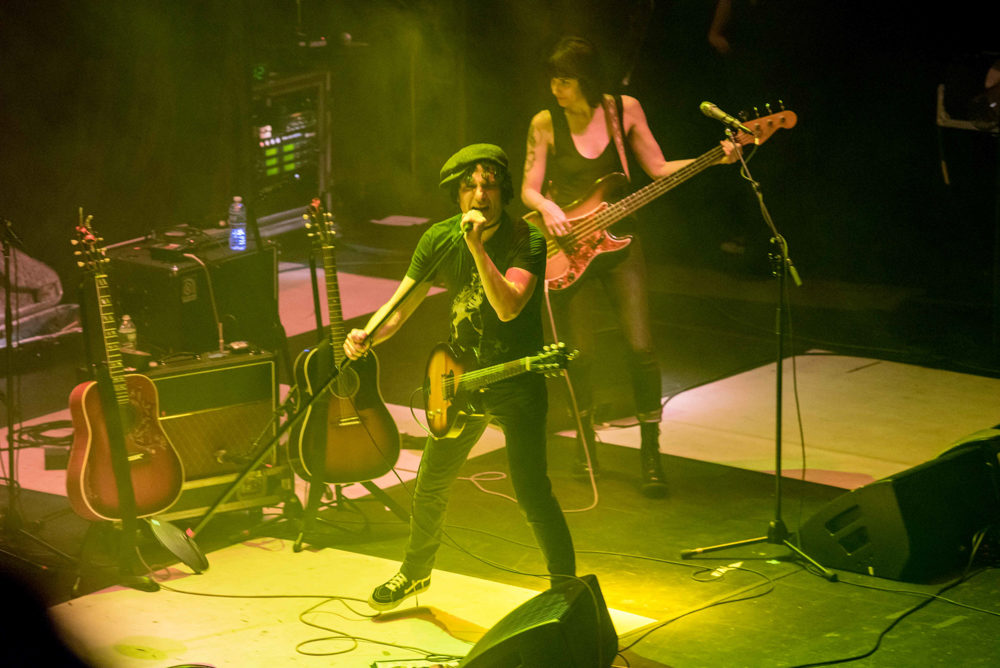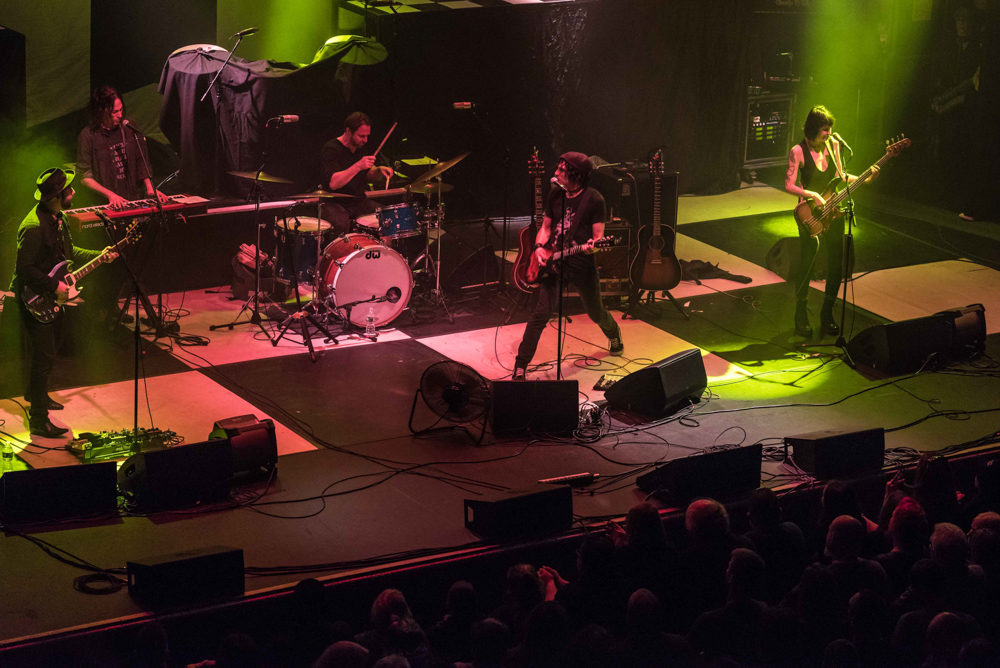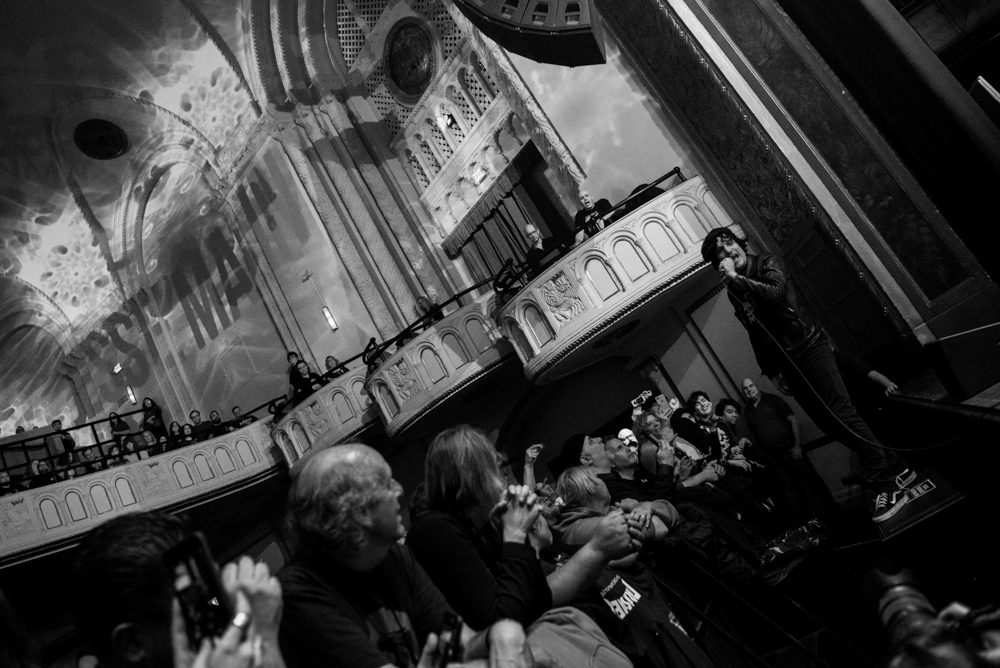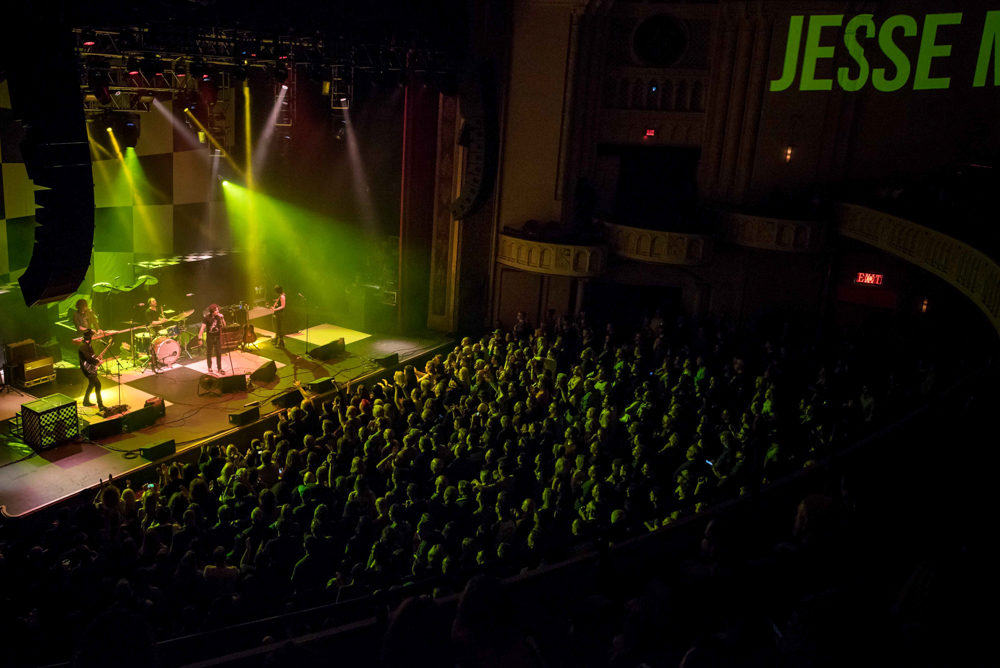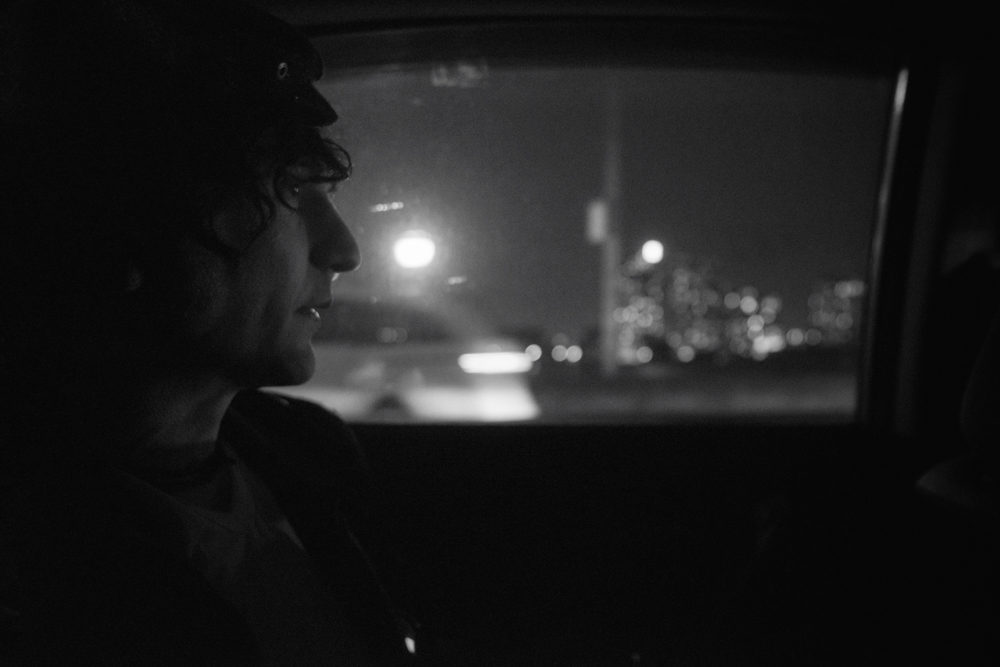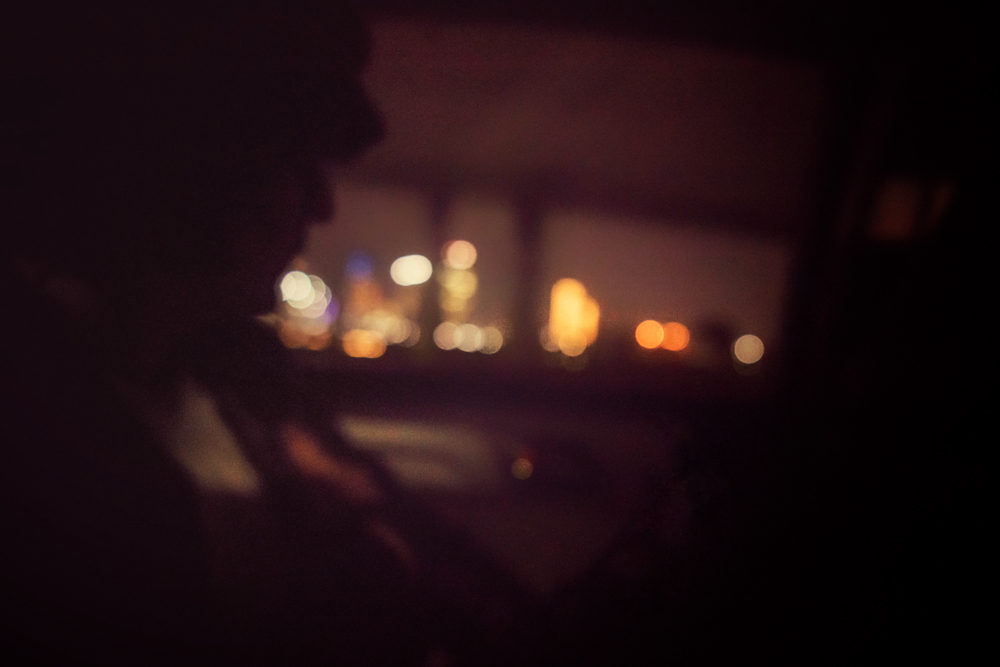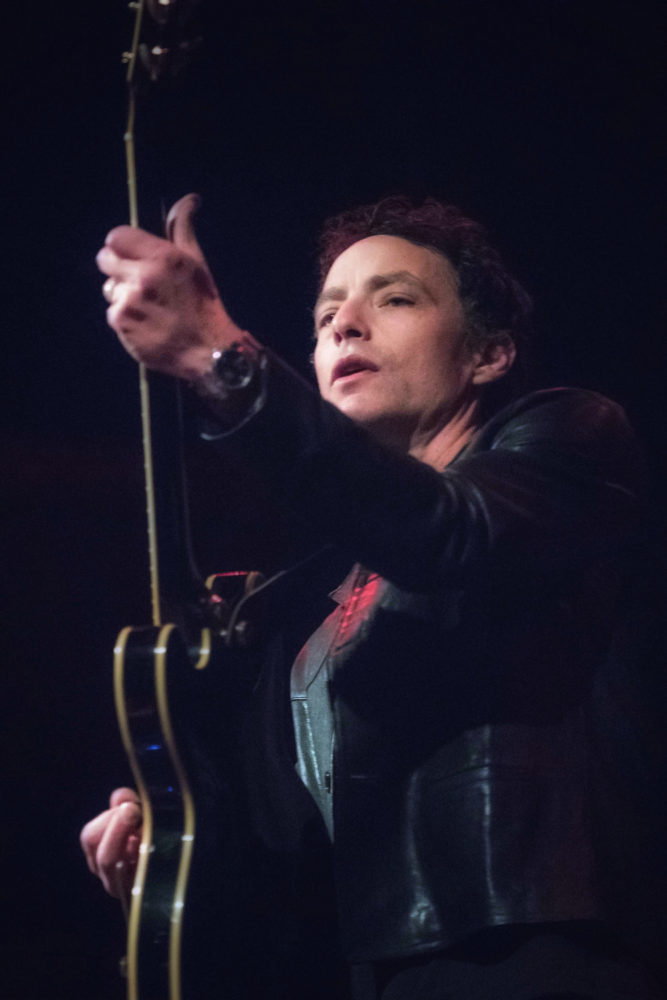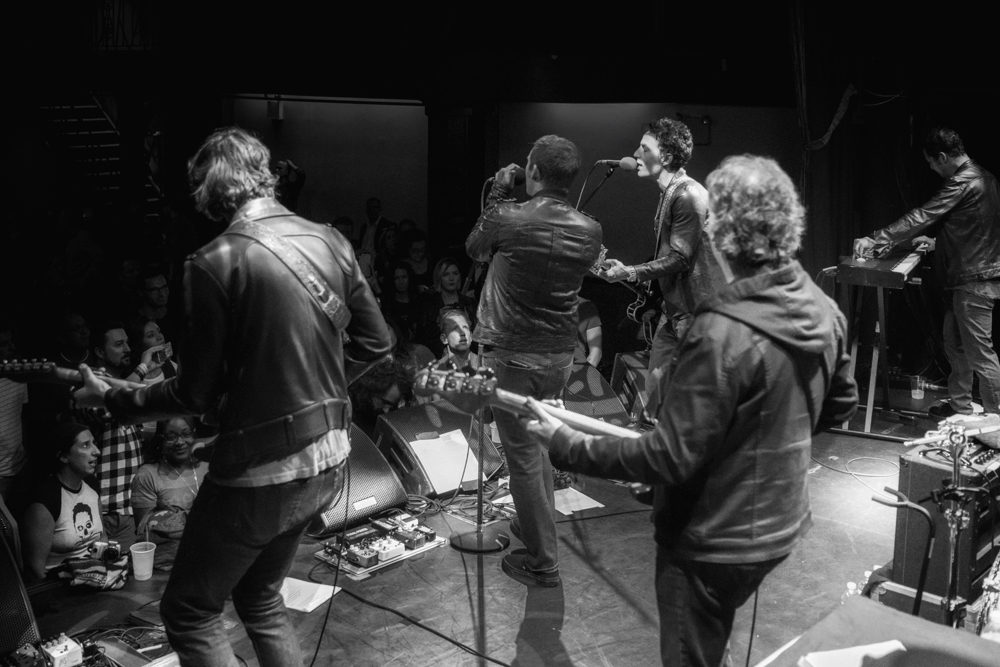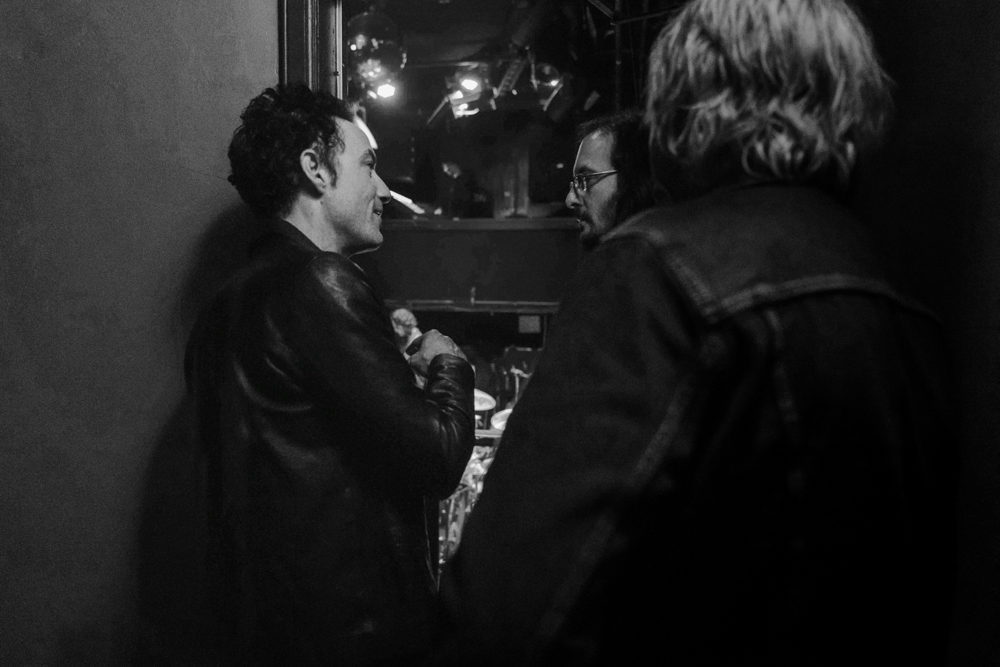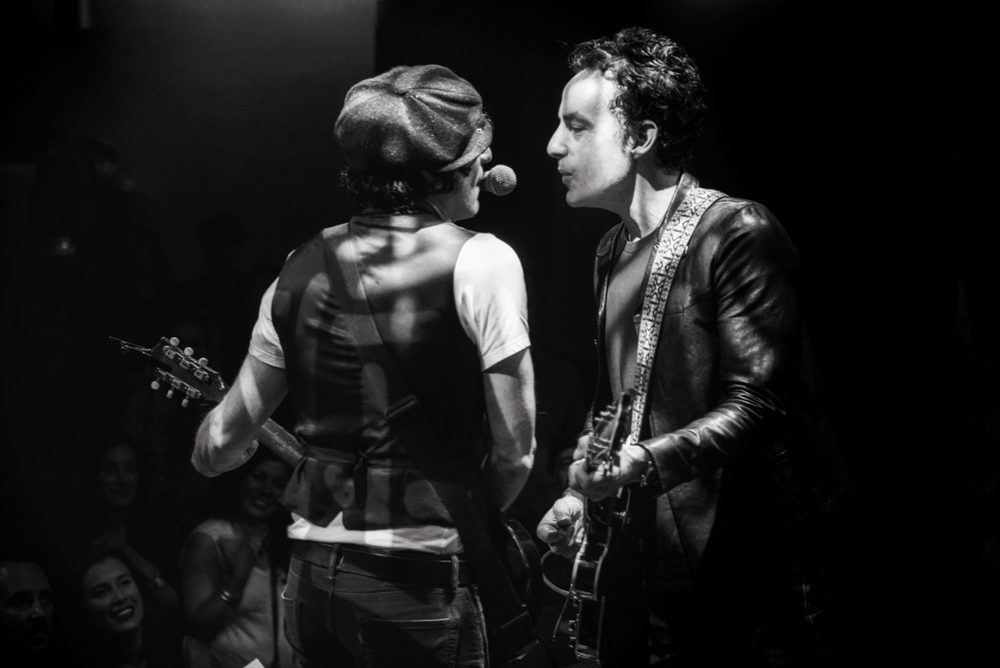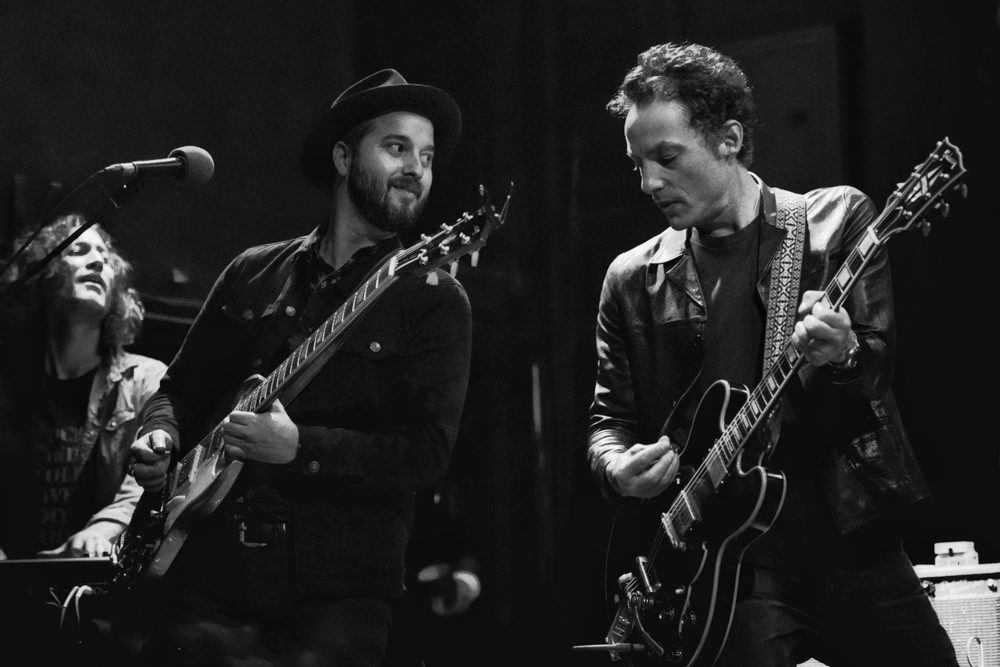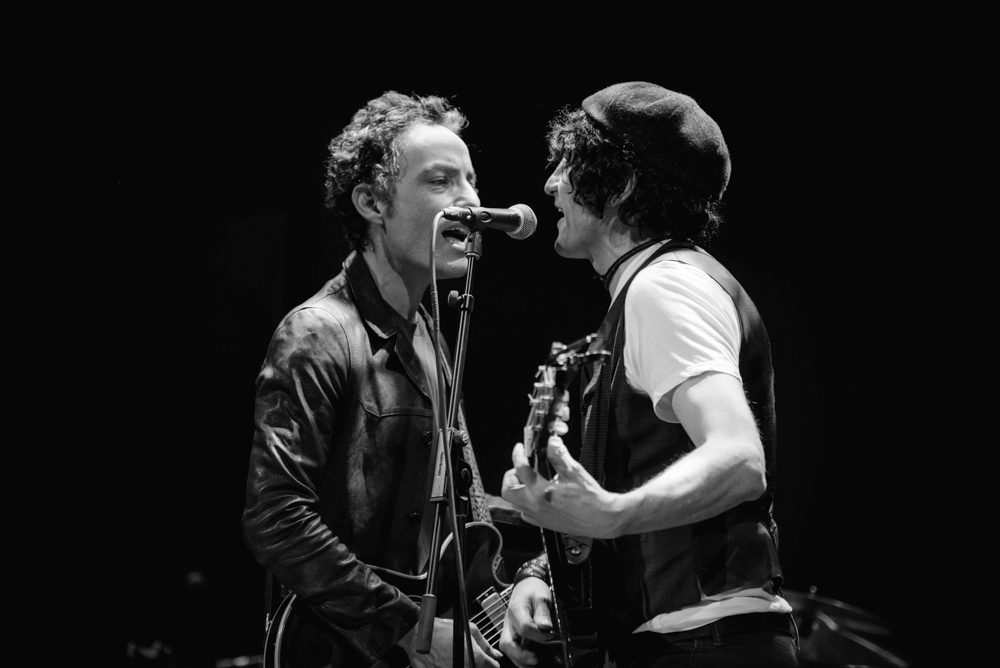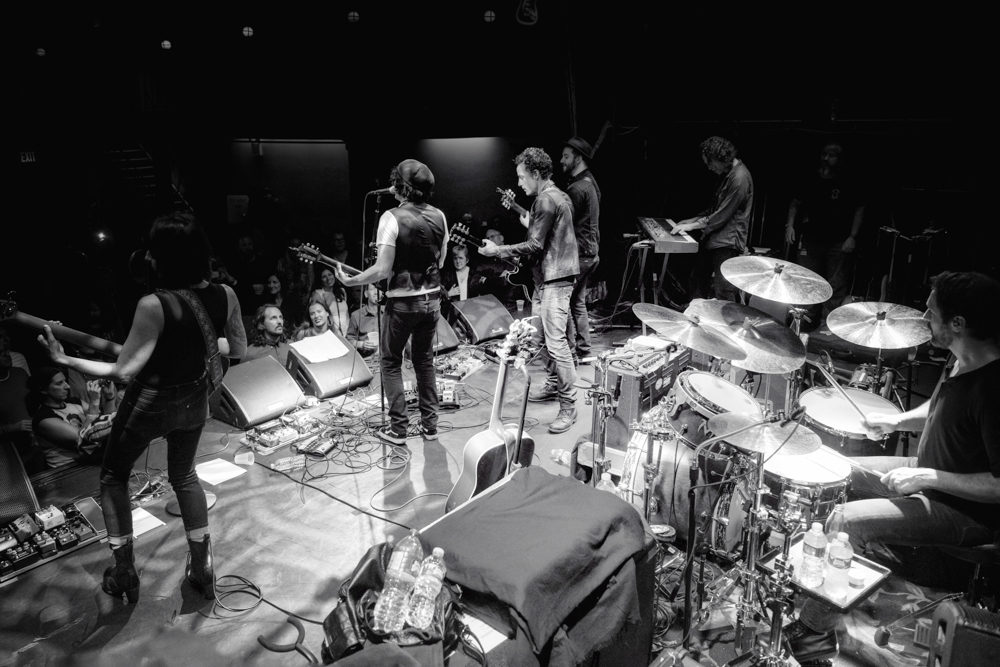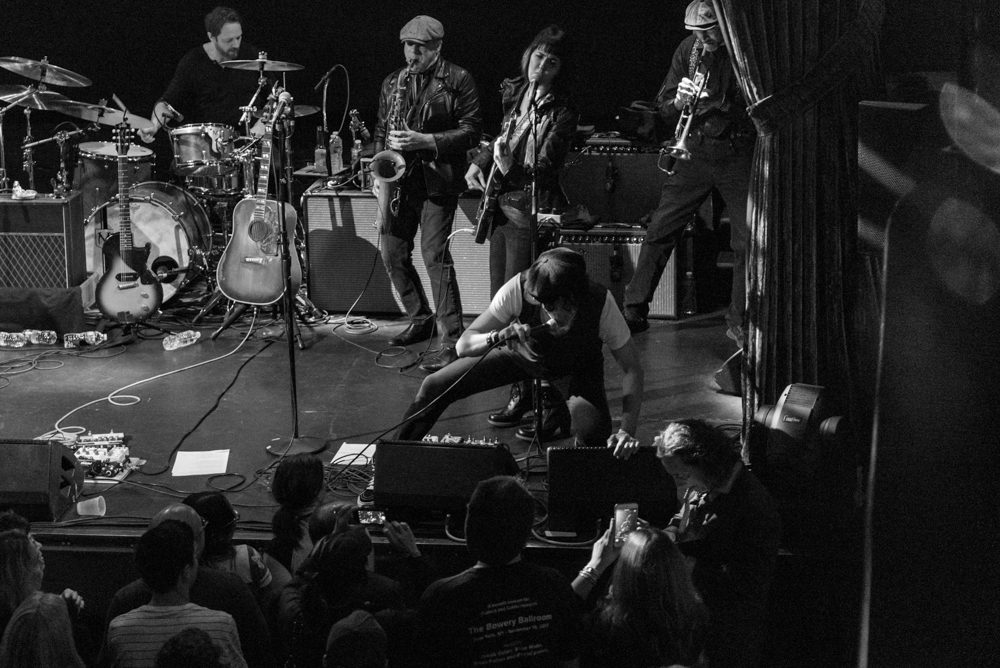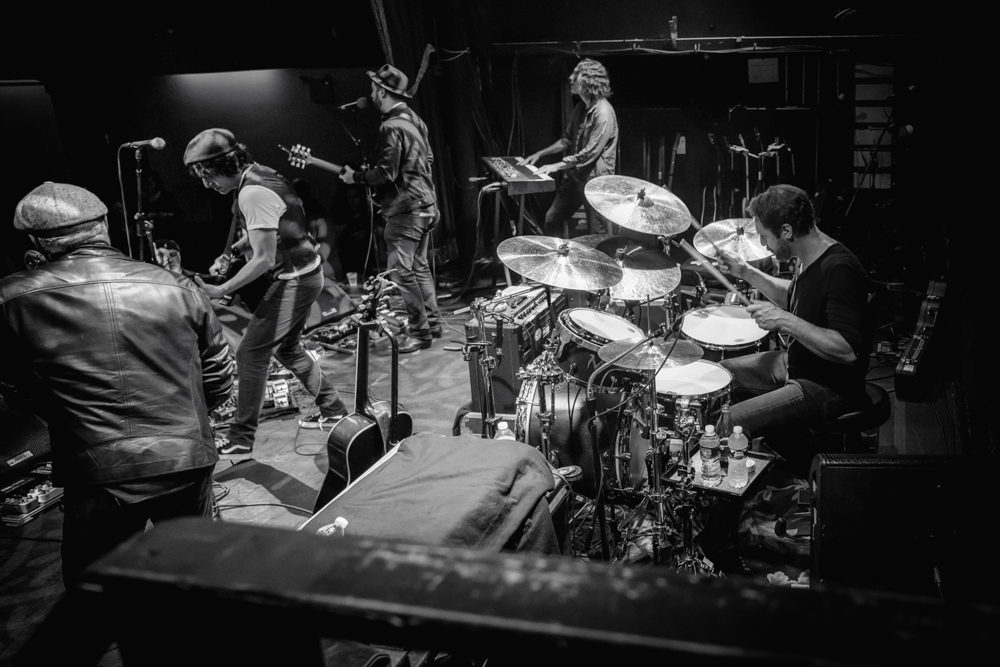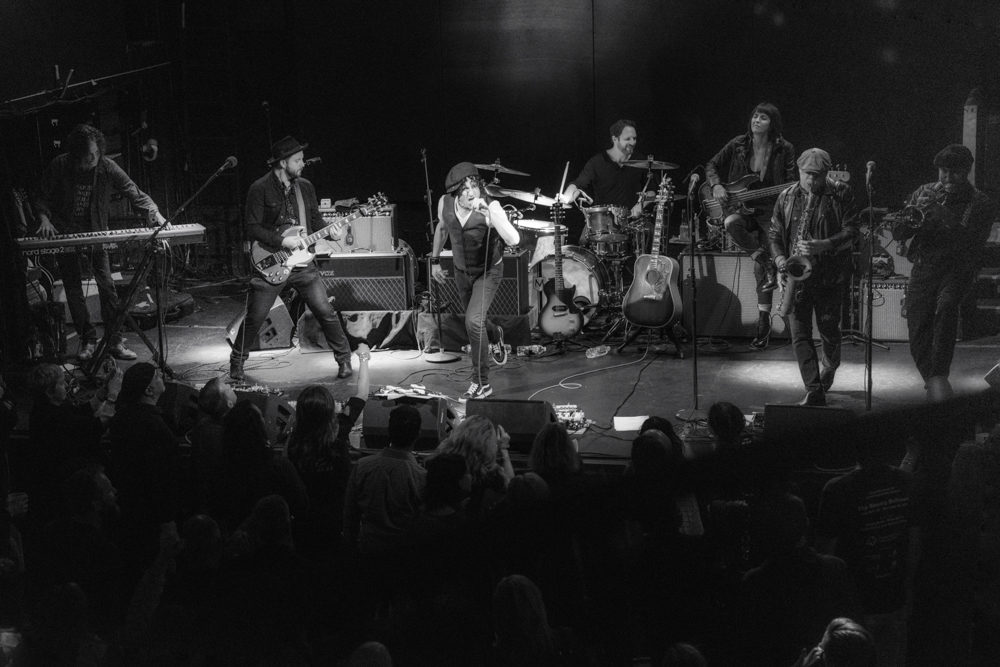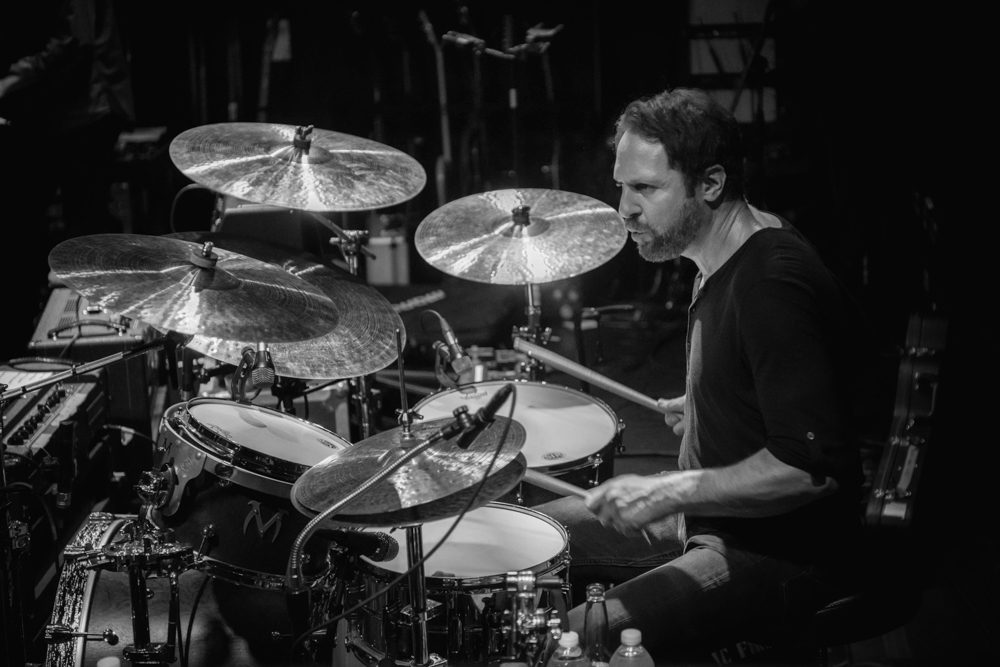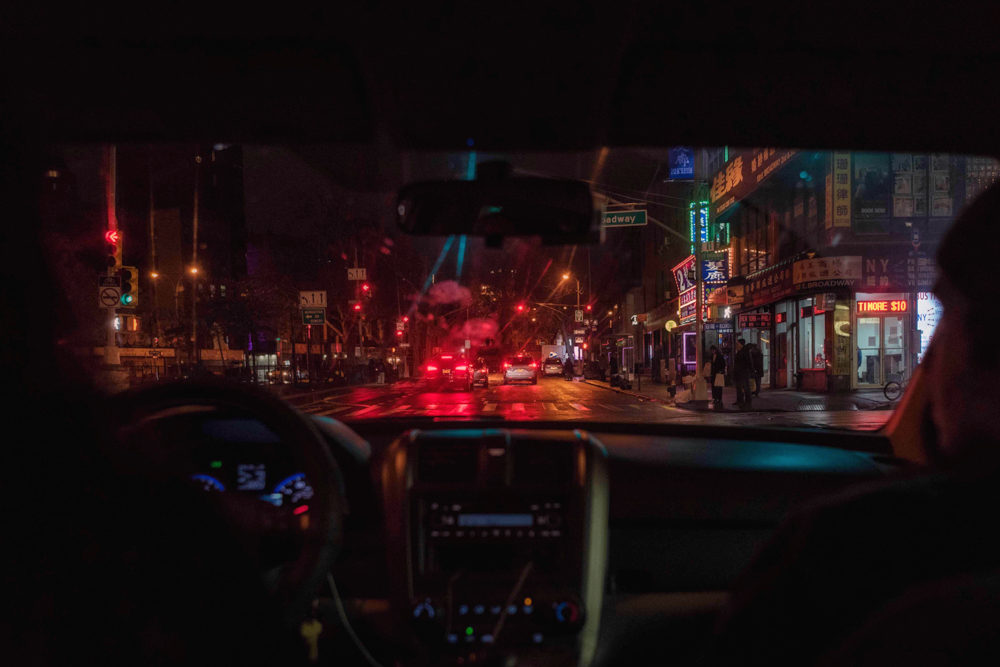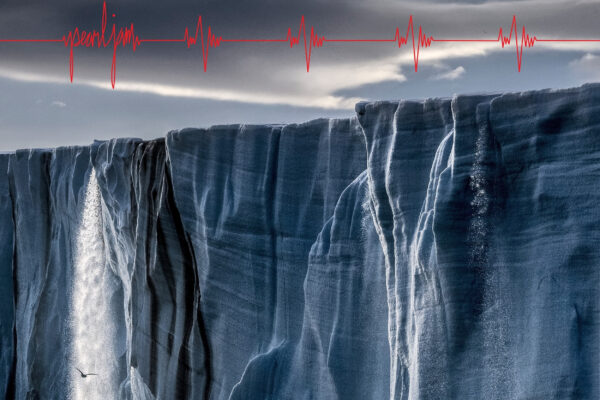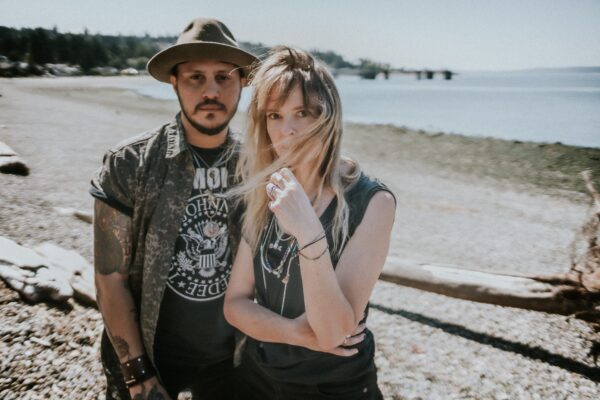A great song, like a great love, grounds you in a narrative. It imbues you with a sense of belonging, and in the chaotic disconnect of modern life, it offers the solace of recognition — you are seen, you are understood. And while not all songs evoke a specific time and place, the ones that do, become signposts — a way to trace your path back.
For Jesse Malin, the evolving landscape of New York provides both backdrop and characters to his storytelling. As a young boy, the Queens native would ride the subway to the Lower East Side and eventually wind up in Alphabet City’s hidden, unlicensed venues like A7 and 171A, where then-unknown bands like Bad Brains played and recorded. From the hardcore Heart Attack to glam-punk D Generation and as a solo artist, Mr. Malin’s work is part autobiography and part historiography, populated with narratives of the five boroughs and their denizens. The stories contain both grit and glamour, paying homage to the ever-shifting cityscape in New York Before the War and protesting political disorder in Meet Me at the End of the World. And the friends he’s gathered along the way are testament to decades spent at the heart of the music community — his collaborators include Ryan Adams, who produced Jesse’s first solo record, The Fine Art of Self-Destruction, and Bruce Springsteen. Joan Jett joins him on stage for charity concerts, and Lucinda Williams recently talked of working together. Rock ‘n roll is as much encoded in Jesse’s DNA as it is embedded in the coordinates of this city.
Last Saturday, Jesse and his band had me along for a two-gig day, first at Capitol Theatre opening for Cheap Trick, and then at Bowery Ballroom, playing a benefit show with Jakob Dylan (The Wallflowers) and Brian Fallon (Gaslight Anthem). This is a photo essay of a twelve-hour whirlwind.
2 p.m. finds me on the corner of Avenue A outside of Berlin, one of the nightlife venues in which Jesse is a partner. Vans are out front and the back door to the bar is propped open as the band finishes loading gear. The sky is a slate grey shade of impending rain. Before we pile into vehicles, everyone gathers to review logistics for what promises to be a hectic day. We’re getting an early start up to Port Chester, mindful of the potential for Saturday traffic snarls. Load in, soundcheck, break for dinner, hit the stage at 8:30 p.m., play a 45-minute set, and immediately load out and hightail it back to Manhattan for a 10:30 p.m. set to close out the benefit for Connecting to Cure. “If we pull this off, it’ll go down in this band’s history books,” one of the guys remark. This is nuts, I think to myself — but if any band can do it, it’s this one. After all, Jesse started logging miles as a teenager traveling with The Ramones. This is just another day in the life of a musician, where necessity makes the improbable, possible.
As the band huddle is breaking up, it starts to rain. I reach in my bag for a lens wipe and notice my phone screen light up. “How’s it going so far?” a friend texts. I type back: “So many people, so many instruments. Should I volunteer to ride on the roof, a la Romney’s dog?”
The travel crate idea isn’t necessary, though. We’re off, and I’m in the car with Harry Greenberger, a filmmaker and Jesse’s stage manager/guitar tech. The latter is on his phone for much of the drive up, putting together a list of crew and guests for the two shows, coordinating with his booking agent on west coast gigs, and scrolling through a set of photos that Bob Gruen just sent over for the upcoming week’s L.A.M.F. shows. (The 40th anniversary of Johnny Thunders & The Heartbreakers will feature members of Social Distortion, Blondie, Sex Pistols, and special guests, including Jesse.)
Even when he’s sitting still in the back of a car, Jesse radiates a restless creative energy. He’s totally present in the moment, telling stories and asking you questions — and simultaneously, he’ll crack open a notebook to scribble down thoughts and song fragments. As he explains, he’s old-fashioned, writing with pen and paper, and recording to tape when he can. He travels with a stack of Rhodia notebooks. This week, though, he’s using a hardback journal emblazoned with the Stones’ licking-tongue logo, a gift from a friend.
We inch toward our destination through bumper-to-bumper traffic, navigating to GPS cues provided by the voice of Johnny Pisano (if you don’t follow his directions, you get a rebuke delivered in that unmistakable Brooklyn diction). Jesse mentions that he’s looking forward to Brian Fallon’s new album. Harry passes back the audio jack, which Jesse plugs into his phone. We listen to the lead single, “Forget Me Not.”
An hour and a half, or maybe closer to two hours later, we arrive in Port Chester. There’s a few stoplights between us and the historic Capitol Theatre. Up ahead, a dog sticks his head out the passenger-side window and looks back at us, canine brows furrowed as if bemused by the convoy of musicians.
Load-in proceeds like clockwork. The stage is bathed in purple light and the echo of the empty theatre recalls some sacred cathedral. The dressing room downstairs is dimly lit. There’s a backdrop set up for the meet-and-greet with Cheap Trick. Rows of black-and-white photos of iconic musicians adorn the wall, and in the corner, there’s an old phone booth and some vintage lighting equipment. Satish Indofunk, Jesse’s trumpet player, holds up the power cord to the ancient rig. “Should we plug it in?” he jokes. “Yeah, I can see the headline,” I tell him. “Rock band causes blackout in Port Chester.” Catherine Popper, who plays bass with Jesse, stretches out on a couch, feline-esque, chatting with Satish and a couple of friends who have come along for the show.
Then it’s time for soundcheck. Monitors adjusted, hands raised, levers nudged up, “how does that sound up front?” I hover in the wings, standing between the soundboard and a row of Cheap Trick’s guitars. The lighting guy punches in some settings and Jesse’s name appears in big block-letter projections on both sides of the room.
We break for dinner. Jesse sits at one of the long tables working through a setlist as Derek Cruz and Randy Schrager (guitarist and drummer, respectively) look on. “This crowd probably doesn’t want to hear about atheists, right?” Jesse quips as he writes out and then scratches off the closing track from his 2015 album, Outsiders.
I sit down across from Danny Ray (saxophone), and we talk photography and the era of fake news. Cheap Trick’s Tom Petersson materializes, holding out his 12-string bass for Catherine’s inspection. It’s bass player geek-out time, and Catherine jokes that she shouldn’t be allowed around such nice things. The room is all smiles as she bends over the custom-built white-lacquer Gretsch, and then passes the guitar to Jesse, the group chatting all the while.
It’s 8 p.m. now, and Cheap Trick’s crew starts to line up fans who’ve come down for a photo op with the band. Daxx Nielsen walks past, shooting us a friendly smile, and Rick jokes that he’s Miles Nielsen’s older brother. I text Miles: “Met your dad for a split second and he’s adorable.” (Miles concurred, of course.)
The setlist is finalized and passed around so that everyone can write out their own copy. It’s almost showtime.
I’ve seen Jesse play shows ranging from the staid City Winery to the sweaty, sold-out, bi-level Irving Plaza, and at jam-packed warm-up gigs at Berlin. He commands any venue, and tonight, the widescreen energy is palpable as he traverses the Capitol Theatre stage, striding out into the pit and climbing onto the barricade, singing to fans who hold iPhones aloft, recording the moment.
I shoot a few songs from the pit before heading up to the mezzanine to look out over the sea of people below. Jesse remarks on the state of the union and how “we can love our country, but hate our government,” before launching into the supercharged “Turn Up the Mains.”
The set over, I run back down to the dressing room. Rob Clores, who plays keys with Jesse, is the first person I see. I’ve enough adrenaline pumping through me that I can’t manage anything more coherent than, “Hey, wow, you guys were great.” Back outside, the van’s high beams cut through the mist and rain. The band and crew carry out case after road case. I can’t quite fathom how it happens, but we are back on the road within fifteen minutes of when they wrapped up the set. As Harry turns on the GPS, Jesse smiles, saying: “Tonight we pray to St. Christopher, patron saint of travelers.”
After the frenetic energy of the show and a load-out at breakneck pace, it seems everyone needs a moment of stillness. I look through my photos from the past few hours. When I glance up, Jesse is gazing out the rain-streaked window at the constellation of city lights. “I used to deliver papers there,” he remarks, nodding at the towers of Co-op City. The backseat quarters are tight and my 24-70 mm is not wide enough, but I twist around anyways and take a few frames.
Reviewing these photos now, I’m reminded of how memory is hazy and tangled with emotions. The concept of documentation suggests there’s a single, all-encompassing narrative that everyone experiences the same way. But we’re all caught up in our own subjectivities. Moments spill outside the camera frame and exceed the boundaries of words. All we have are rough approximations. And sometimes, as with these pictures from the backseat of a car speeding through the night, the captures are wrong — faulty composition and soft focus. Yet these technically-flawed photos make me feel so much more than some crisp freeze-frames do.
We’re creeping up on 10:20 p.m. One of the coordinators for the benefit show assures Jesse, via text, that they’re holding Jakob Dylan’s set a little while longer to give us time to get to the venue. The traffic gods are kinder on the return journey, and we pull up in front of Bowery Ballroom with a few minutes to spare. I follow the band inside. We head down some stairs and up some others, and suddenly I’m gazing out from behind the stage as Jakob and Brian Fallon perform a song together. I forget, for a moment, that I’m holding a camera. How is this real life, I ask myself. The Wallflowers’ Bringing Down the Horse was one of my first-ever music purchases. I still remember that summer afternoon in a record store, browsing in reverse alphabetical order and pausing on that artwork of stars against a dark textured background. Neither the middle-school nor the 2017 version of me can fully internalize what’s going on.
After a lightning-quick sound check, Jesse and his band deliver an energized set. He jumps down onto the floor, followed by the horns, audience members helping to untangle the microphone cord along the way. Jakob joins the band for a cover of the Stones’ “100 Years Ago.” And it’s all over in the blink of an eye. The house lights come on and we troop back upstairs to the dressing room. After the shows, everyone’s body language communicates something different. Some lines from “Broken Radio” flit through my mind — I was thinking about the universe, for what it’s worth … the one about the phoenix bird that died and then returned. It’s evocative of this moment, witnessing both the dazzling display and the offstage moments. These scenes feel viscerally honest, yet all the grainy details don’t diminish the romanticism. Fire and rebirth – the cycle seems to originate from our impossible love affair with a city and an industry in which the only constant is change.
I return to the now-empty floor and pack up my gear while the Bowery staff clears the venue. Outside, the rainstorm has moved on to reveal a mild autumn evening. We head over to 2A for a drink and I see a line of people wrapped down the block, waiting to get into Berlin. I play back the day in mind’s eye: the Capitol Theatre bathed in purple, the Bowery stage glowing red, and now the street lights and neon signs of the city, appearing as yellow smoke that slides along the street.
There’s a New York that’s located on maps and described in statistics. And then there’s a New York lived by millions of residents crammed into impossibly tiny apartments and subway cars, squeezed into venues, shoulder-to-shoulder with strangers and friends, sharing songs. That New York — the one of drifters and dreamers, the New York of Jesse Malin’s songs — is reality and mythology wrapped up in one, spelled out in the black-and-white Helvetica of movie theatre marquees, encoded in symbols and in stories.
It’s nearing 2 a.m. when I step out of 2A and back onto the street. The peak of activity in the Lower East Side has not yet passed; the metabolism of the metropolis, undiminished. This is the beating heart of the city, the pulse that propels us past the bar nights, telling each other things we’ve never before told.
Pick up Jesse Malin’s latest EP, Meet Me At the End of the World, here. Follow him on Instagram, Twitter, and Facebook, and keep track of upcoming tour dates here.
Postscript: Gig photographers are first and foremost music lovers — we spend countless nights in pits and in crowds, documenting the rock scene. Providing a visual diary of what happens on stage is fundamentally different from capturing what happens off the stage. The former often feels like spectacle, and the latter feels personal. I want you to trust me to tell your story, but that requires a dual vulnerability. You must let down your guard, and I must offer up my work to critique by the very people whose music moves me to seek out a world unveiled only after nightfall. It’s an experience that’s both daunting and magical. It’s an experience that I never take for granted. Thanks to Mr. Malin & co. for letting me ride along for the day.
Article: Vivian Wang

